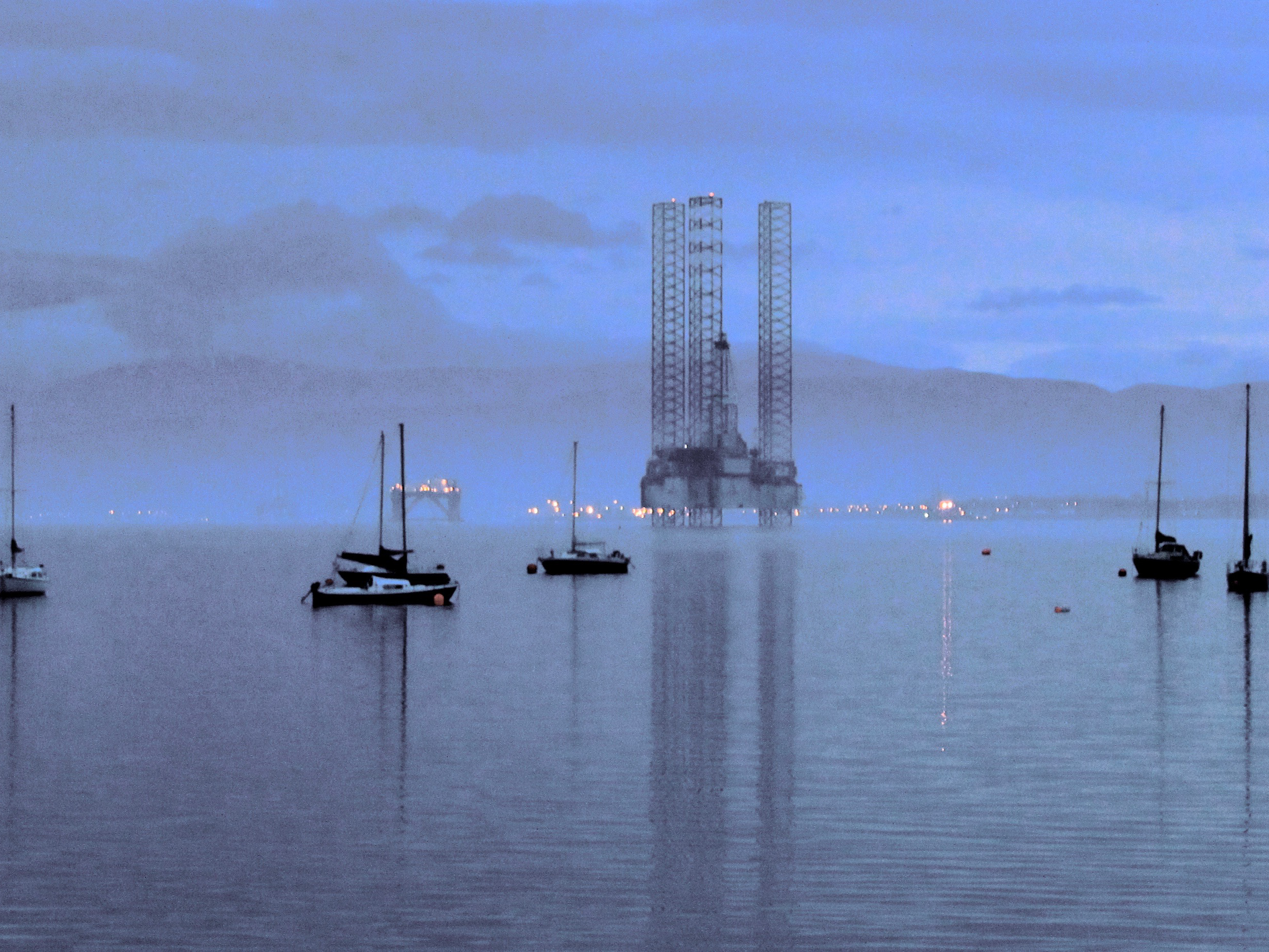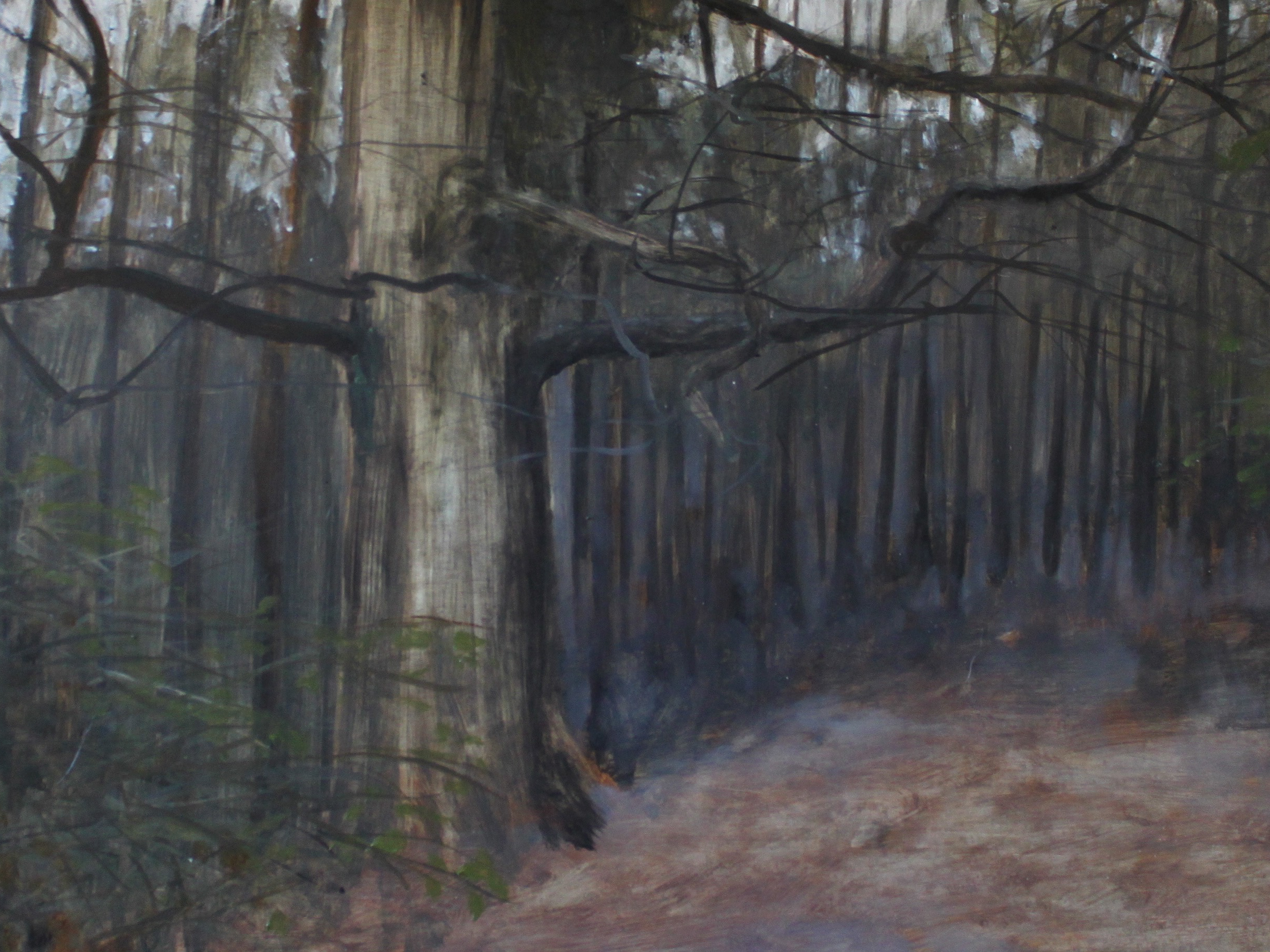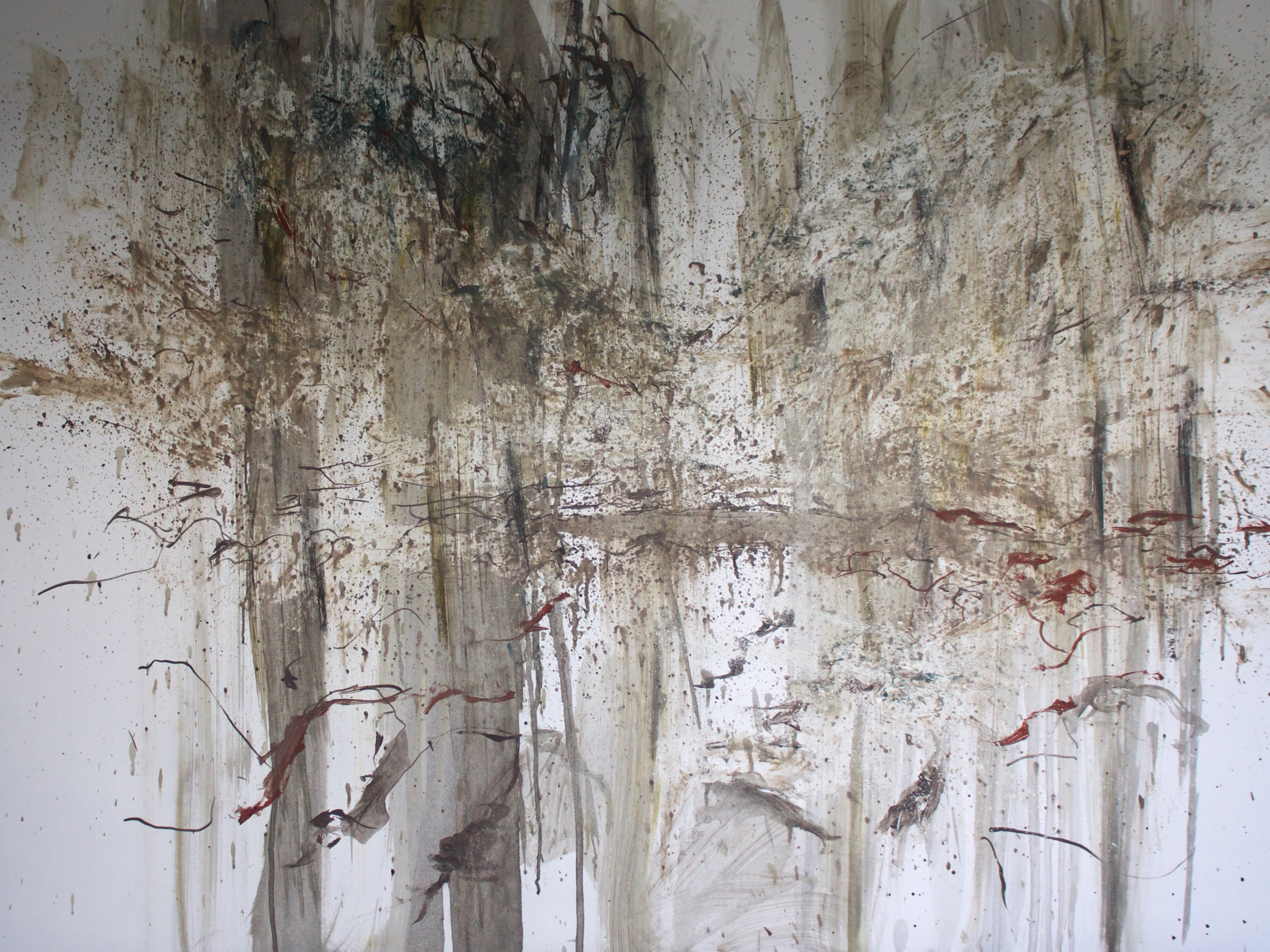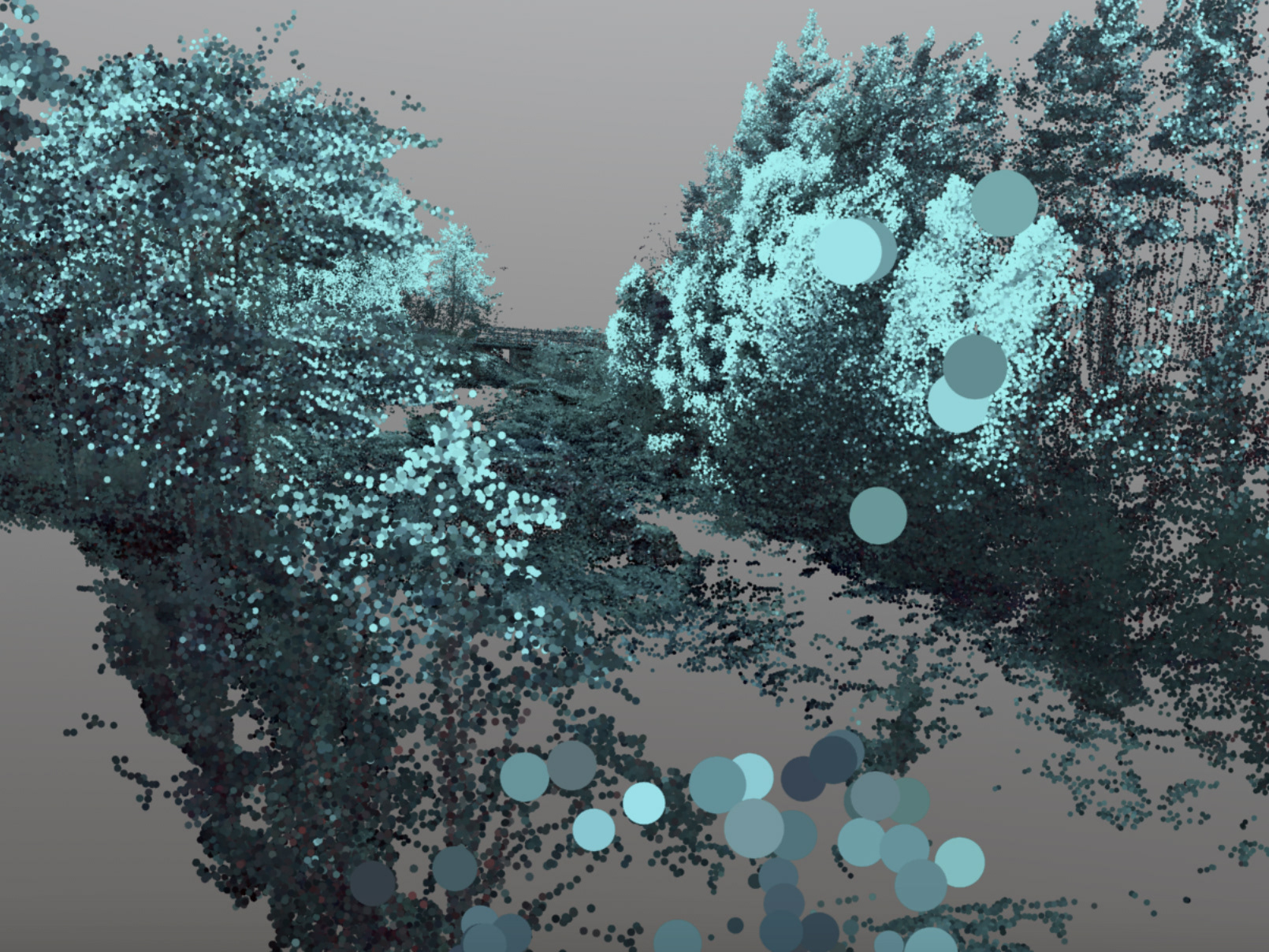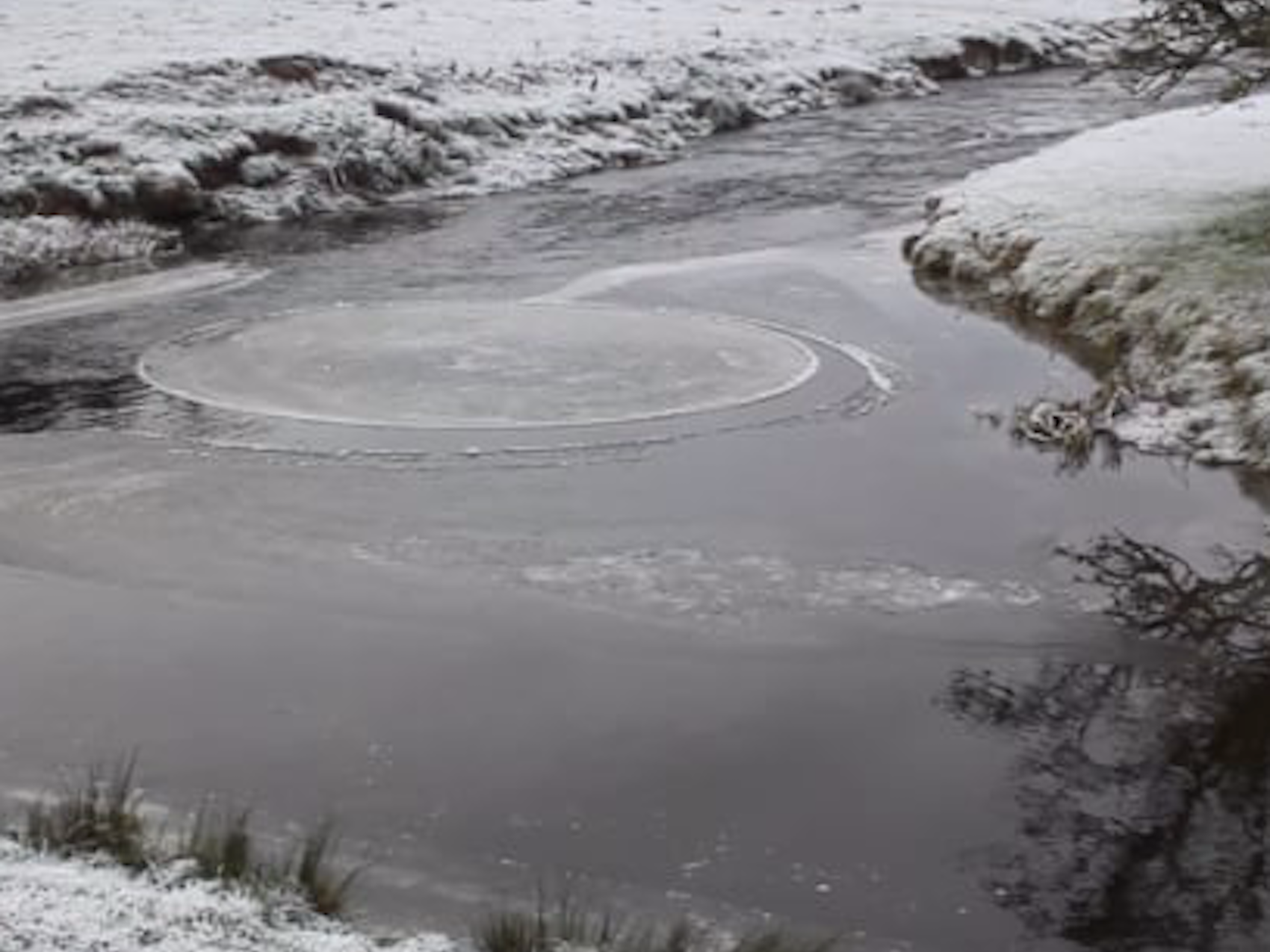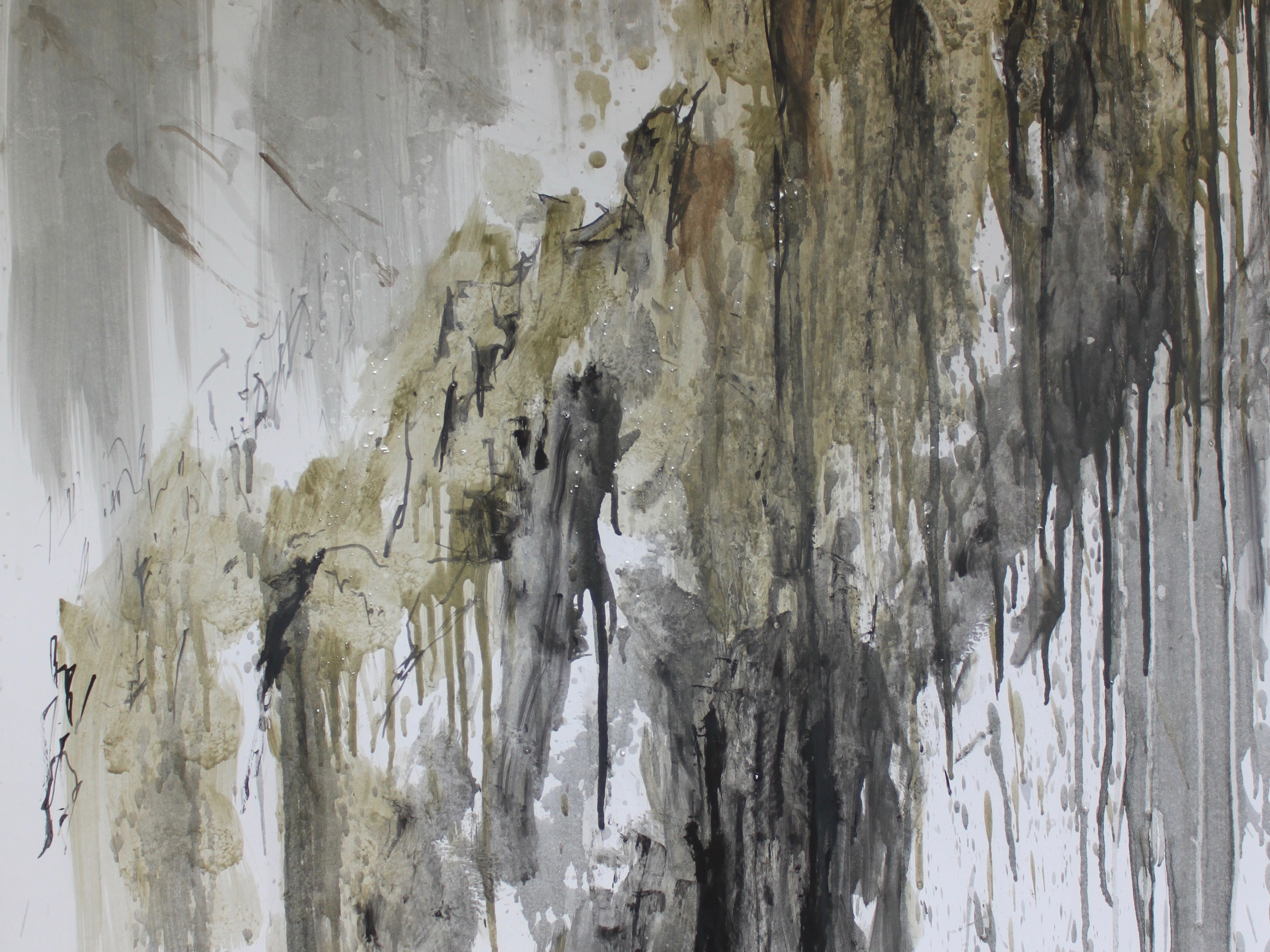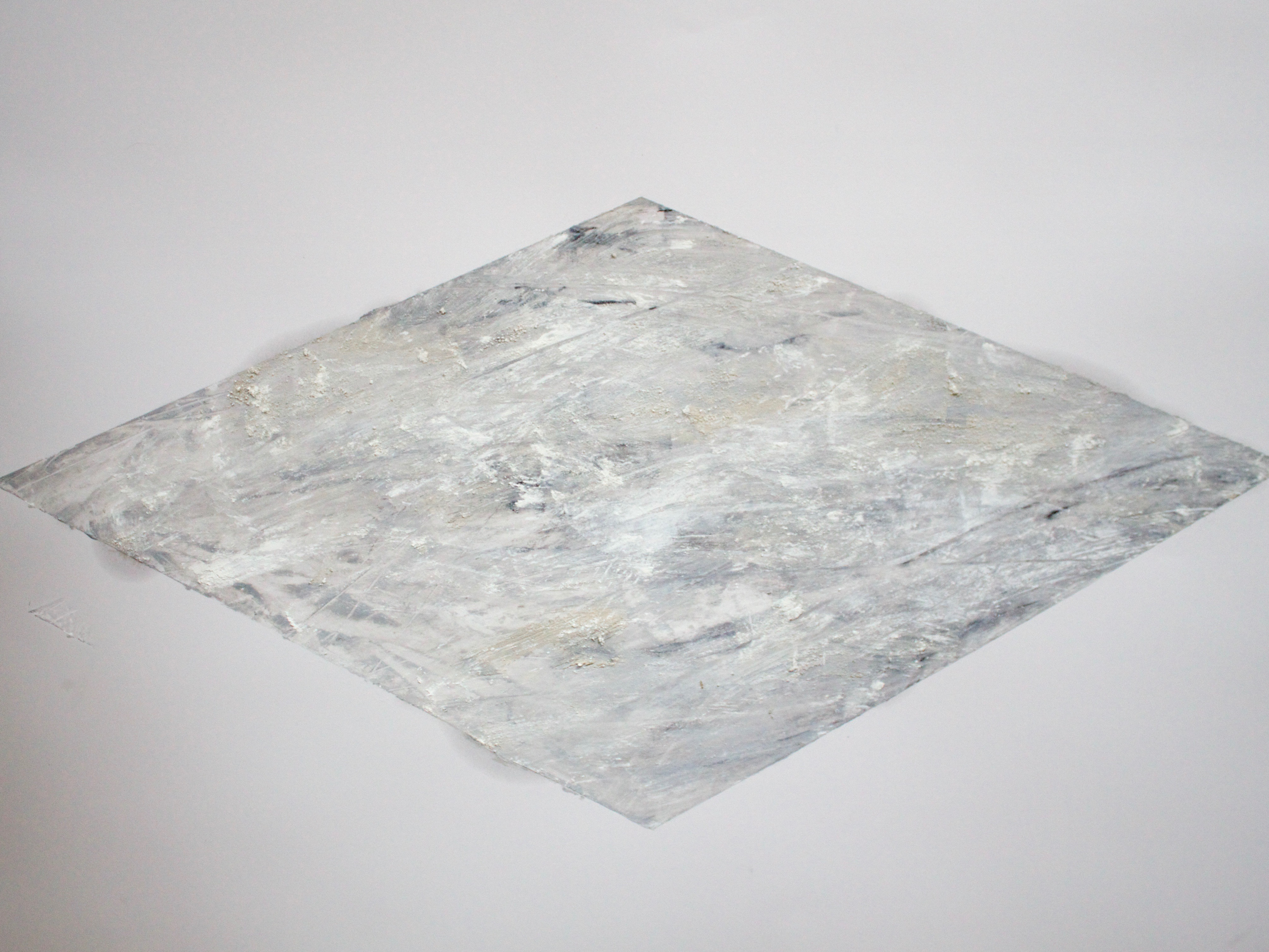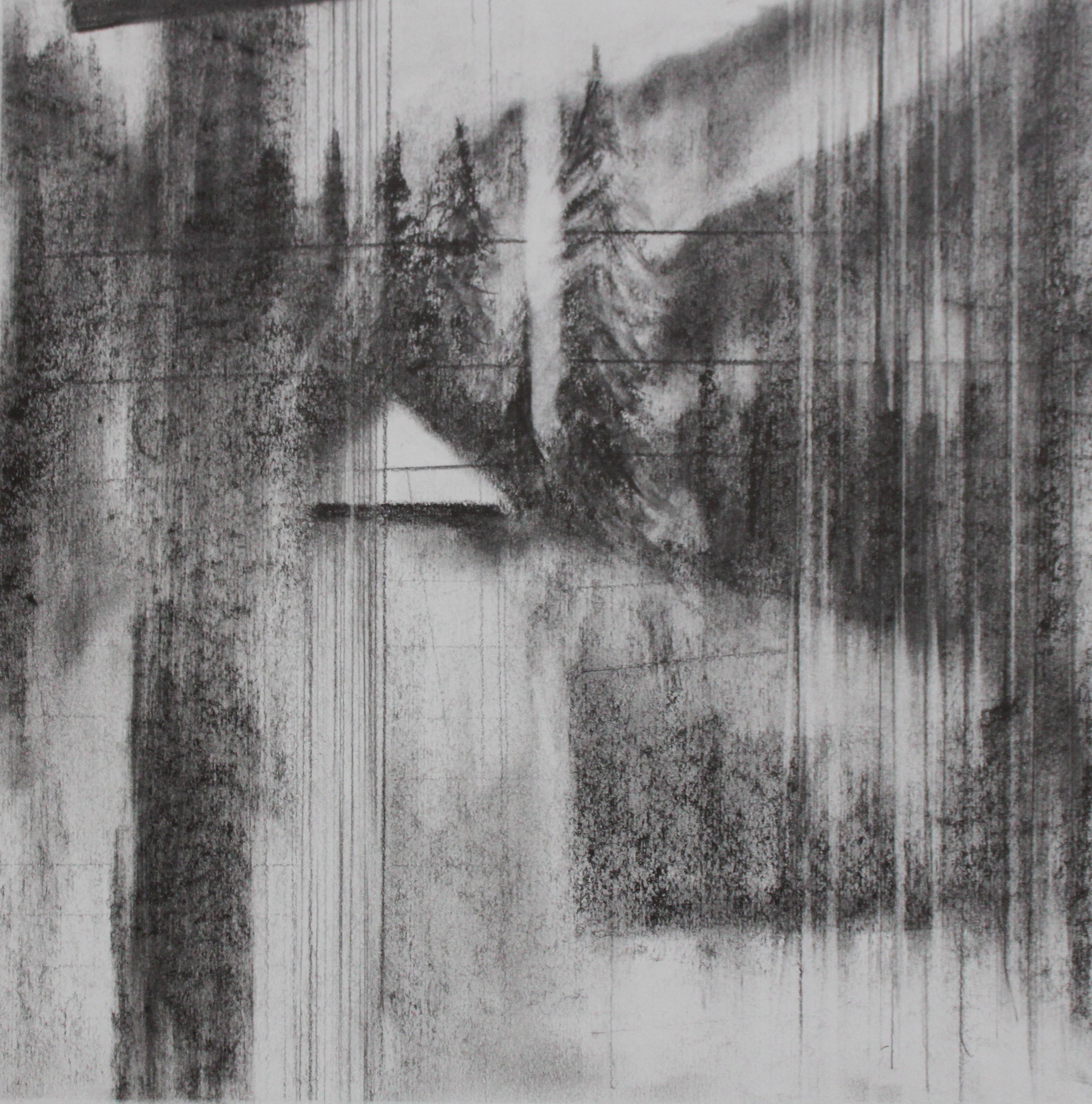
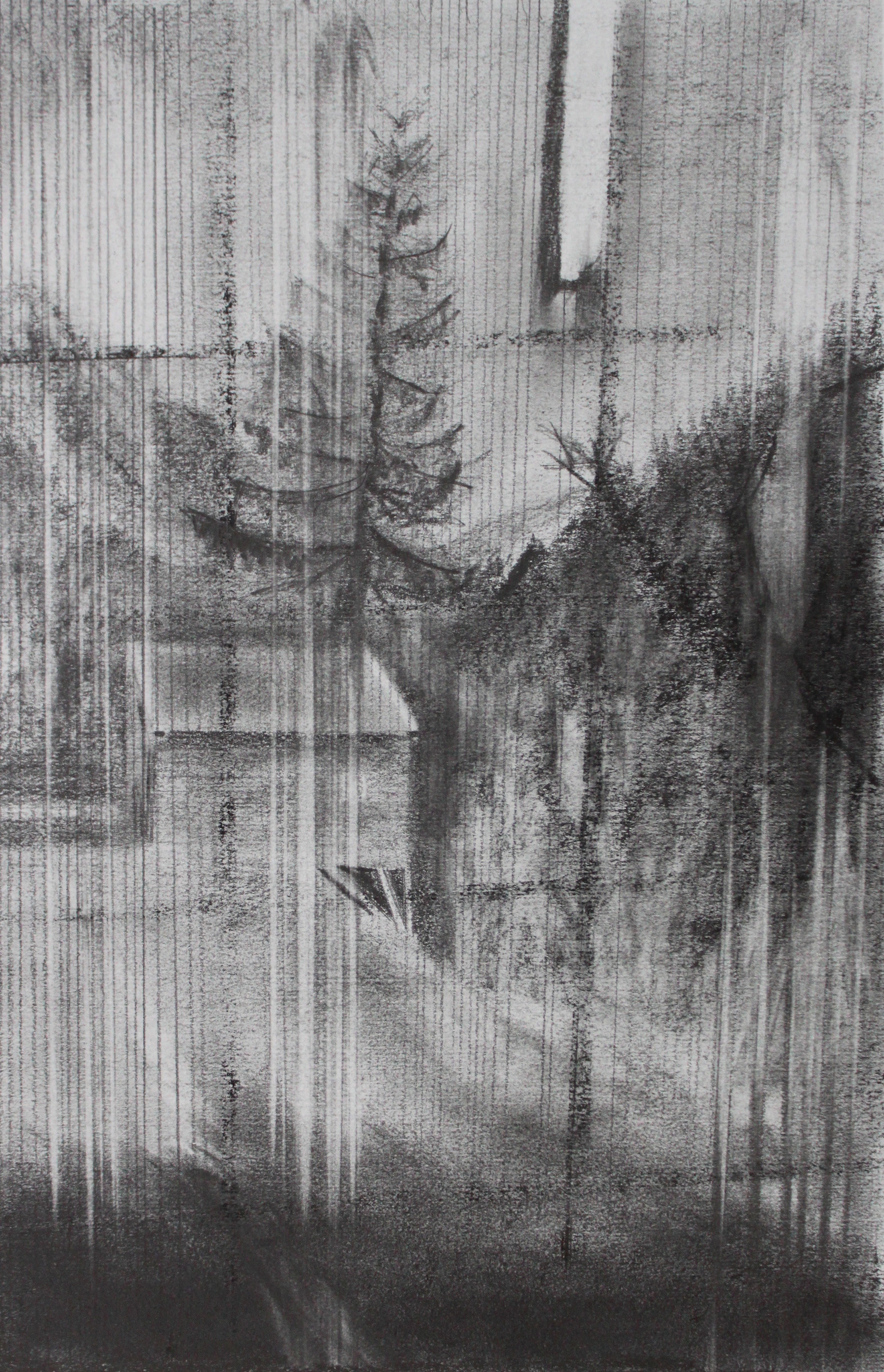
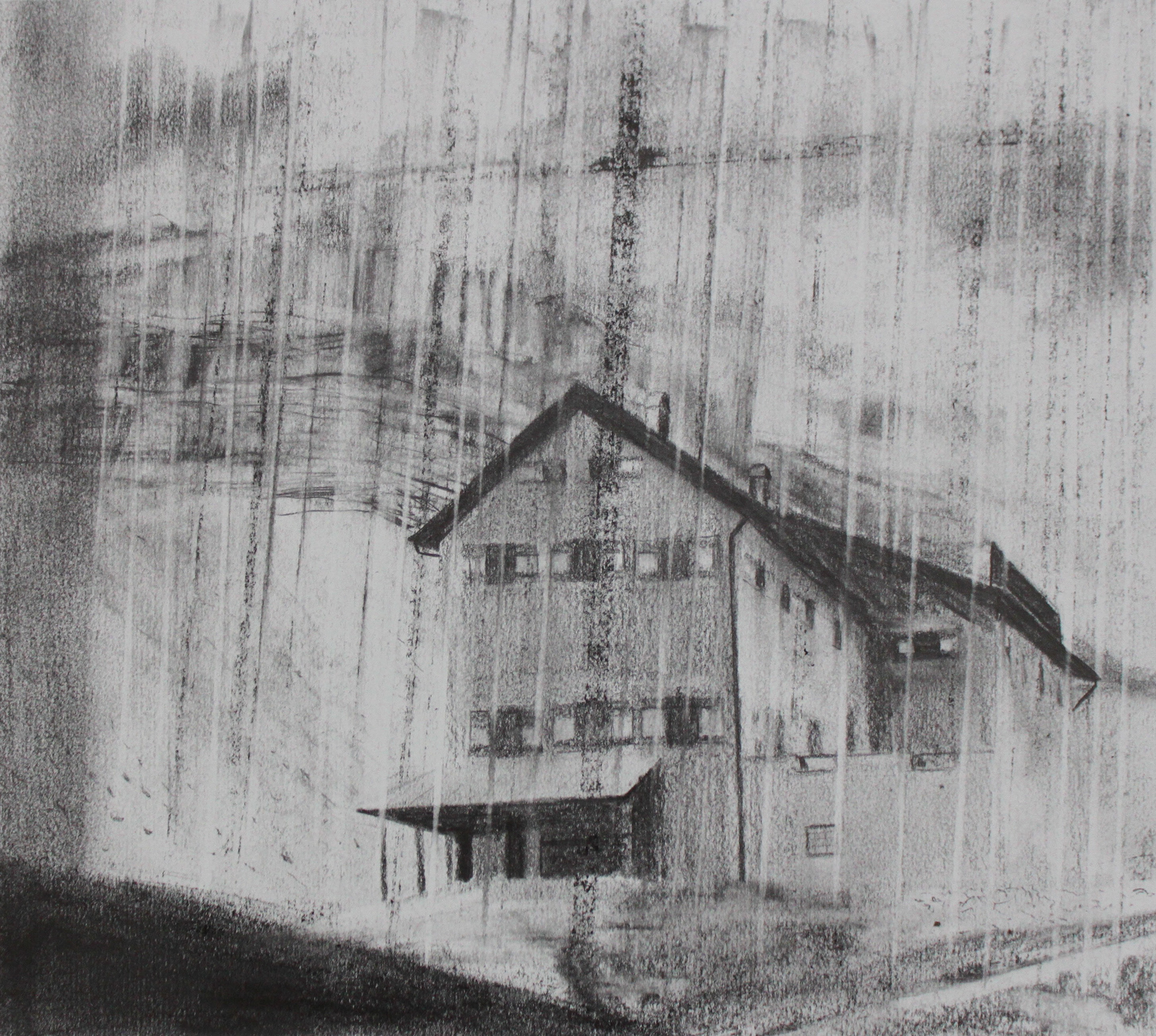

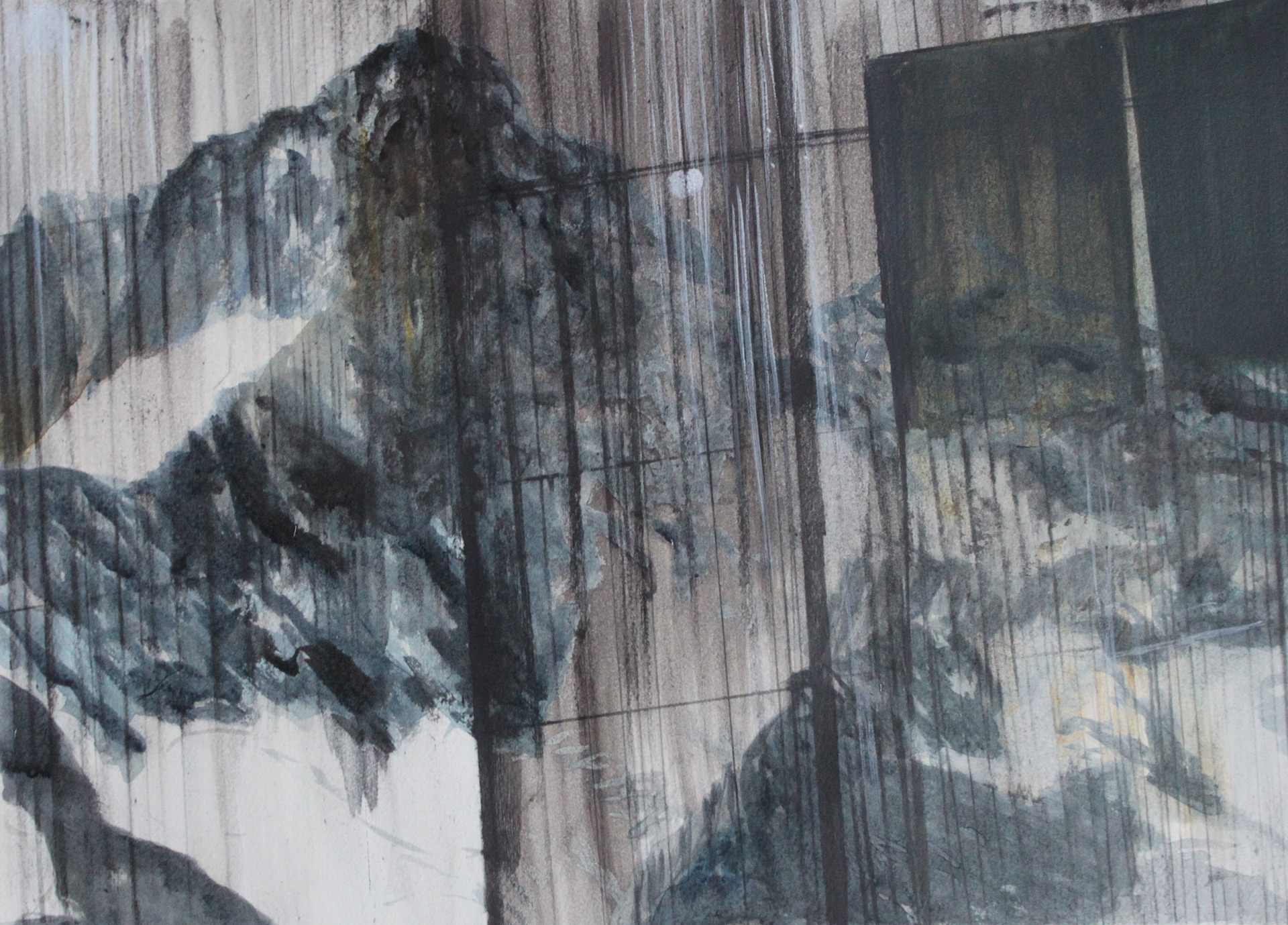
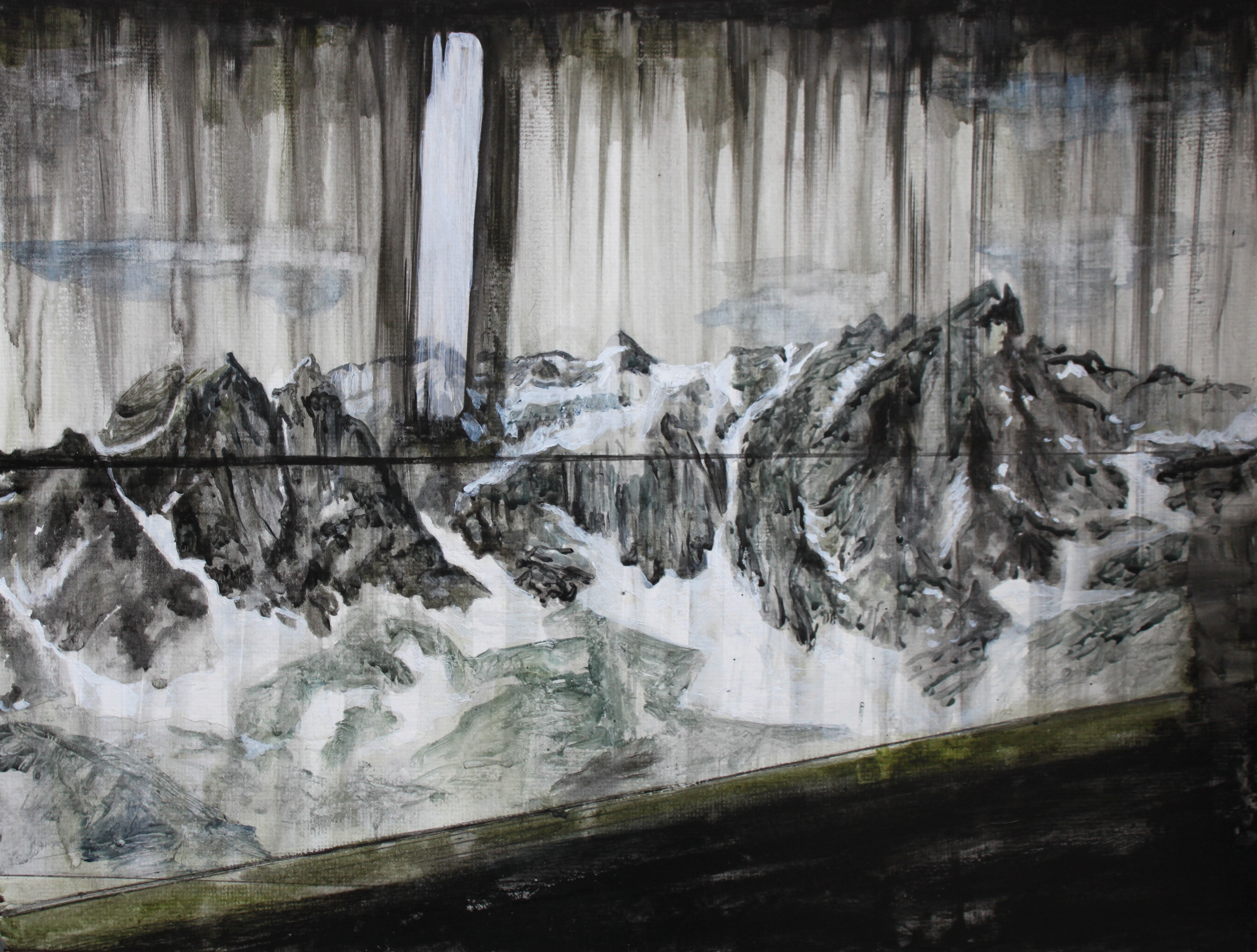
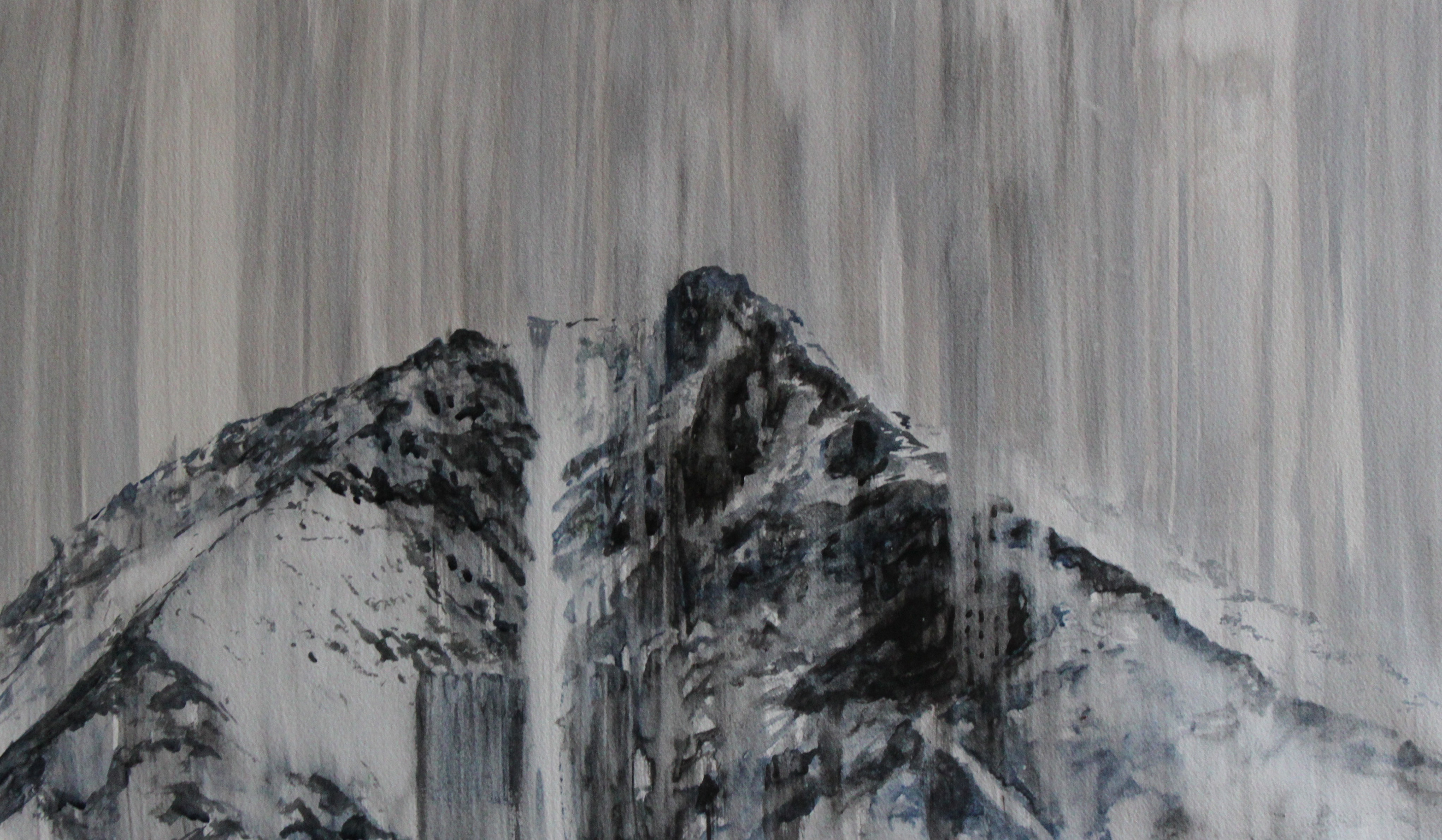

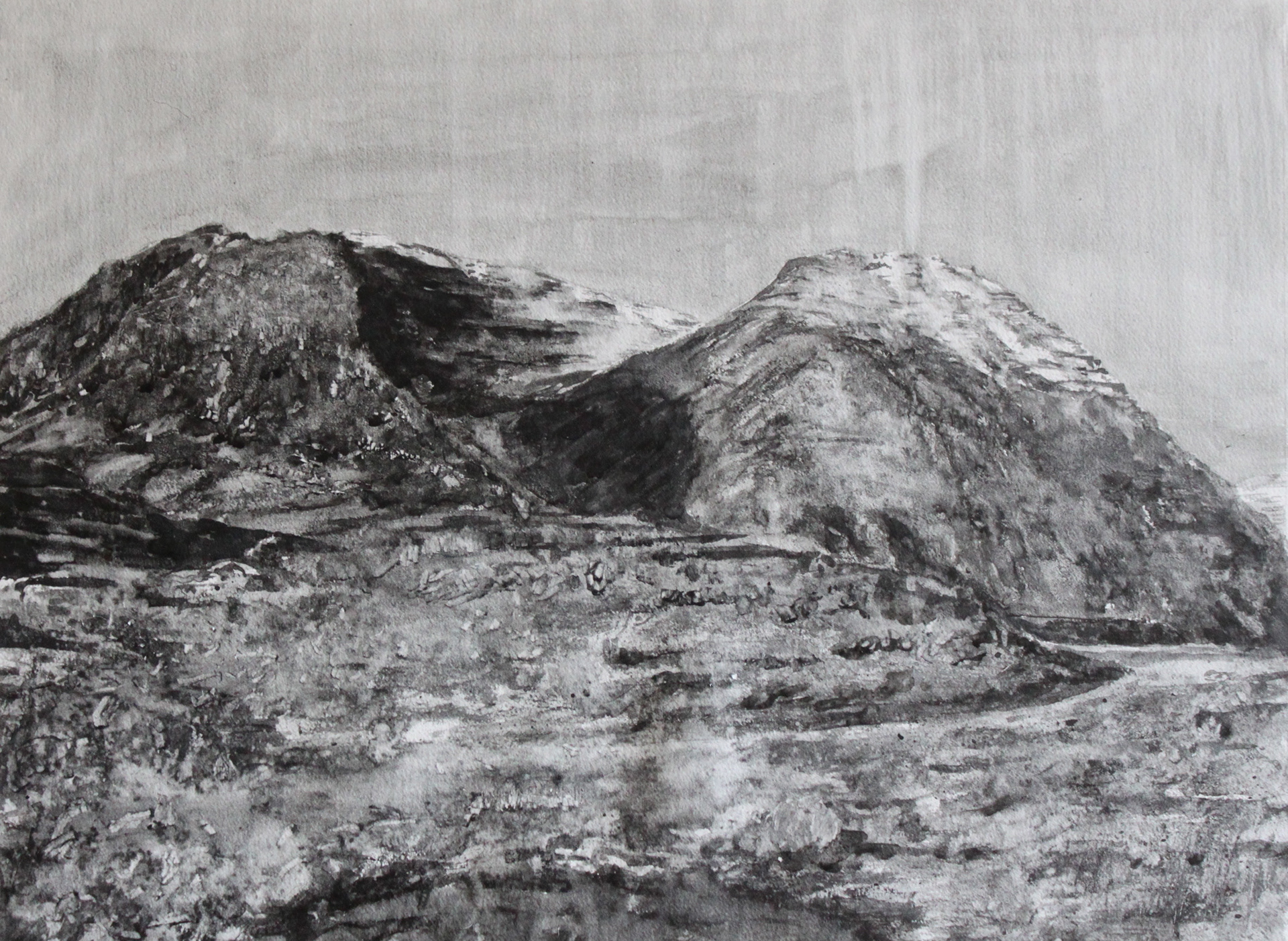
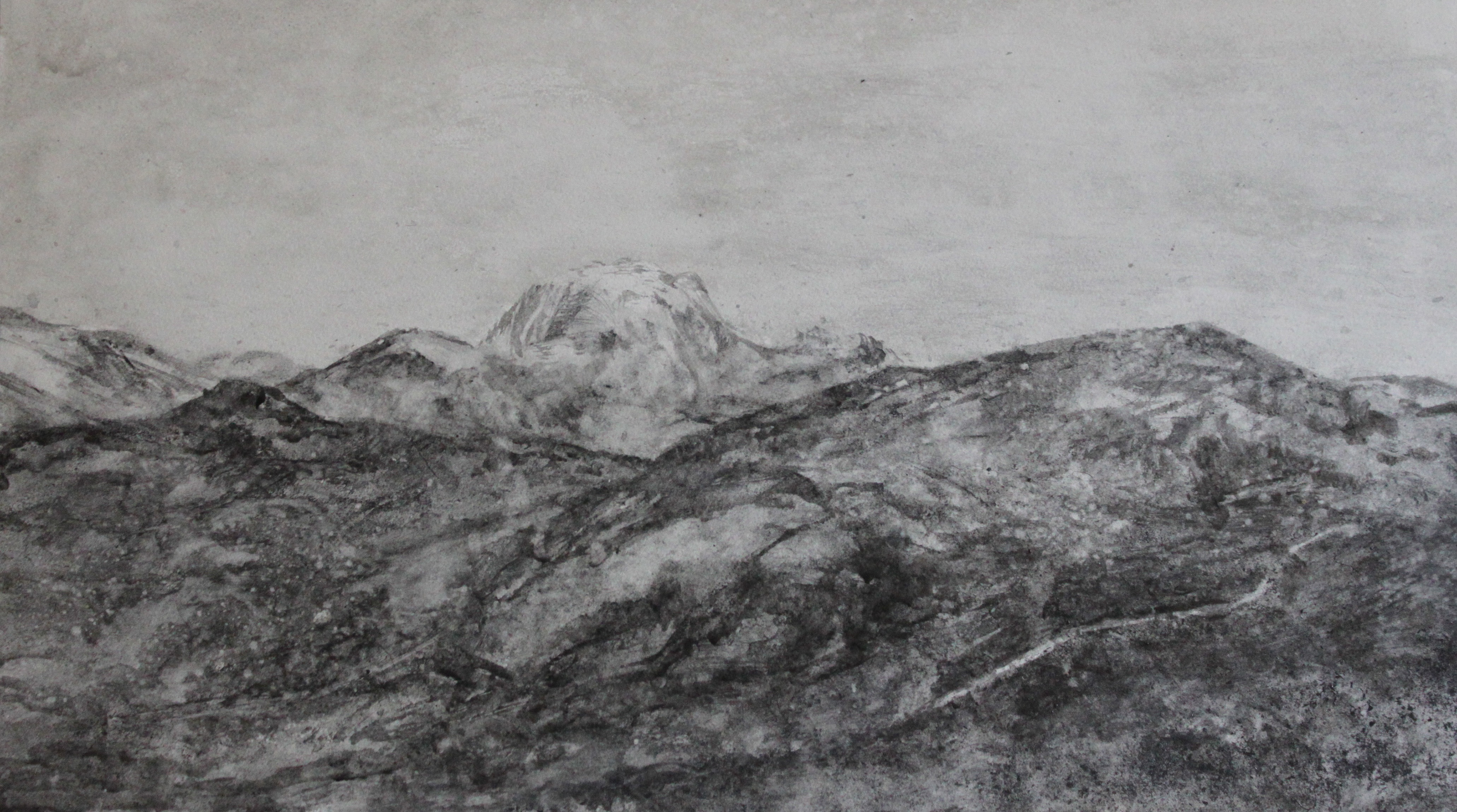
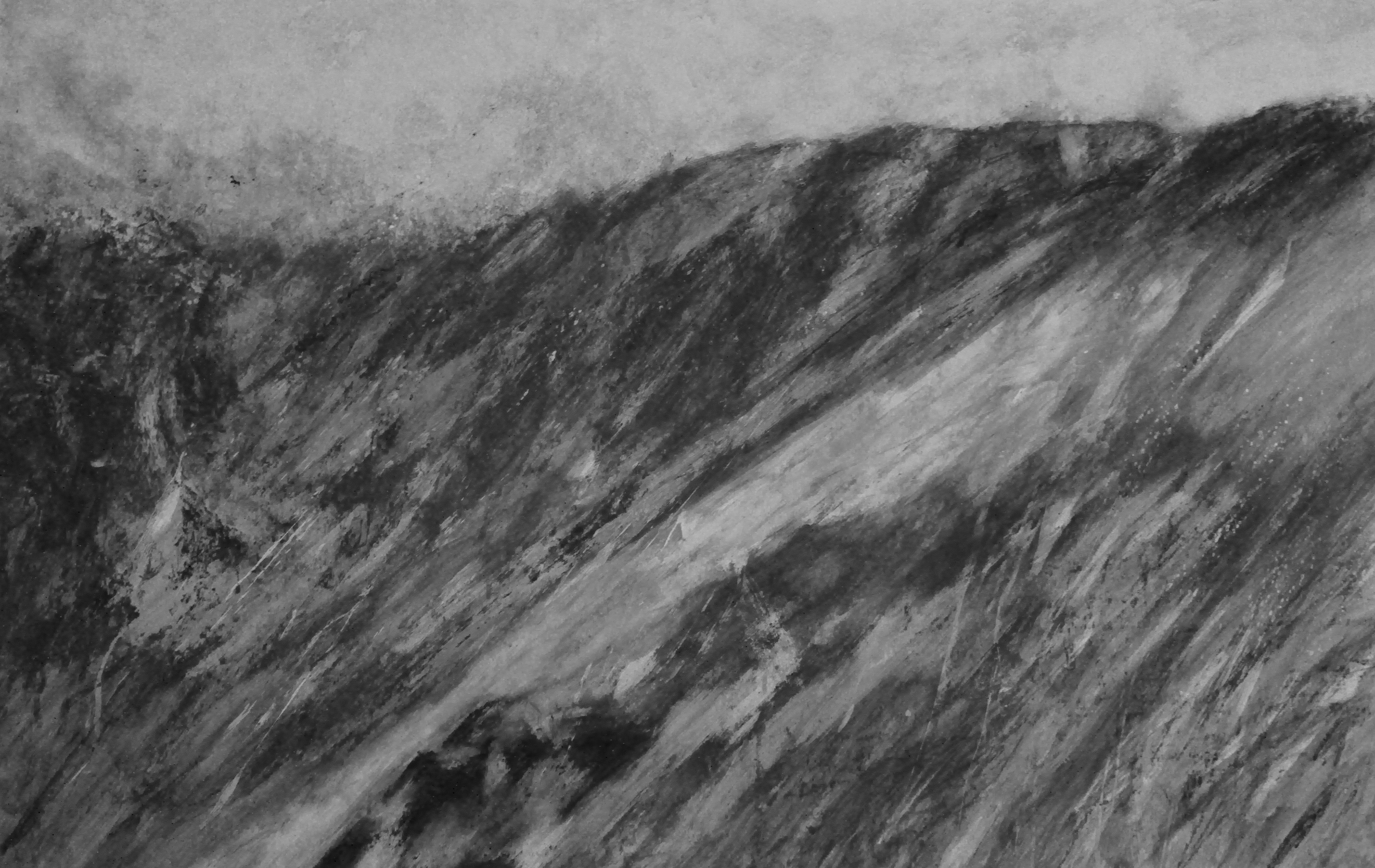
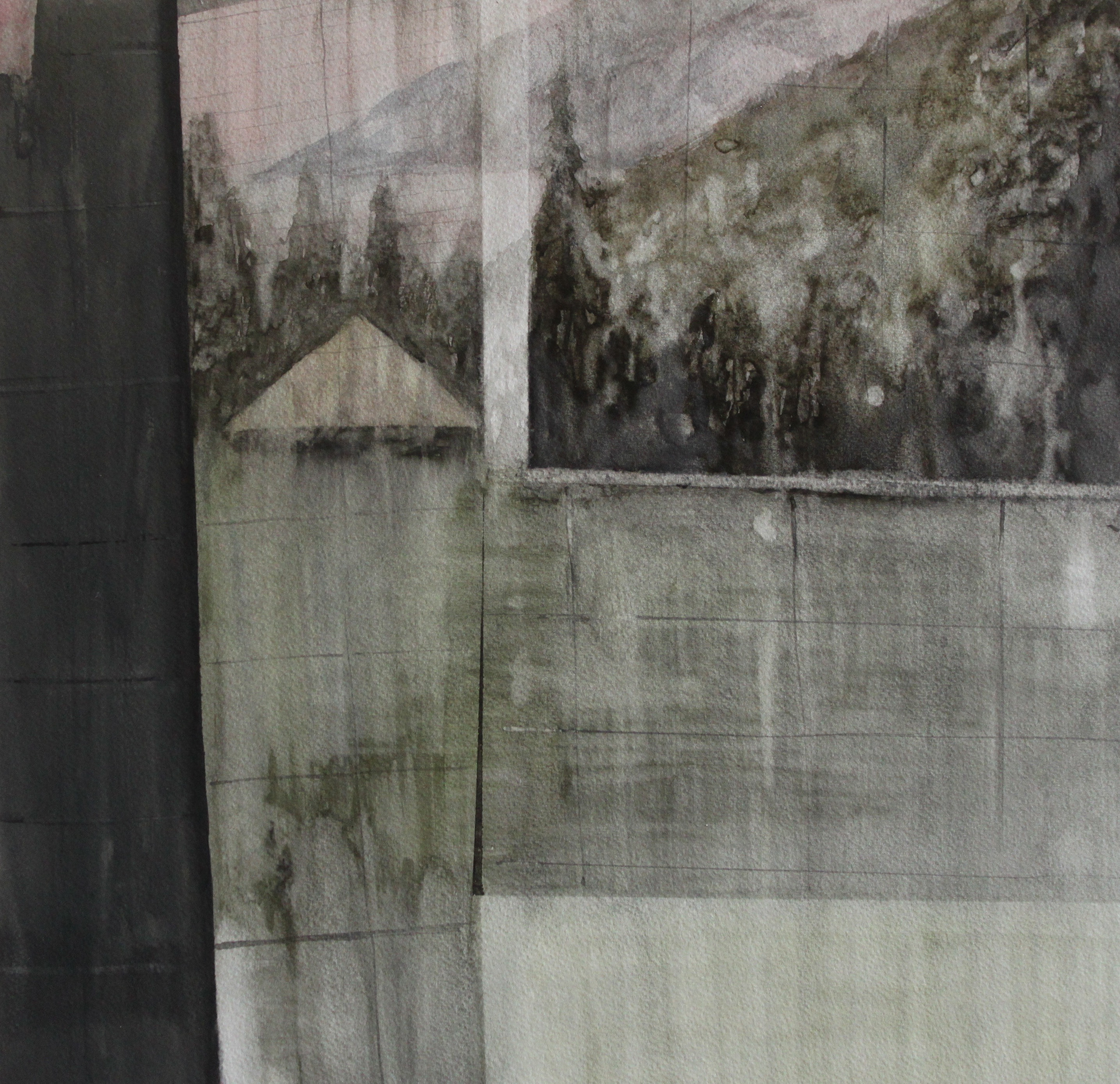
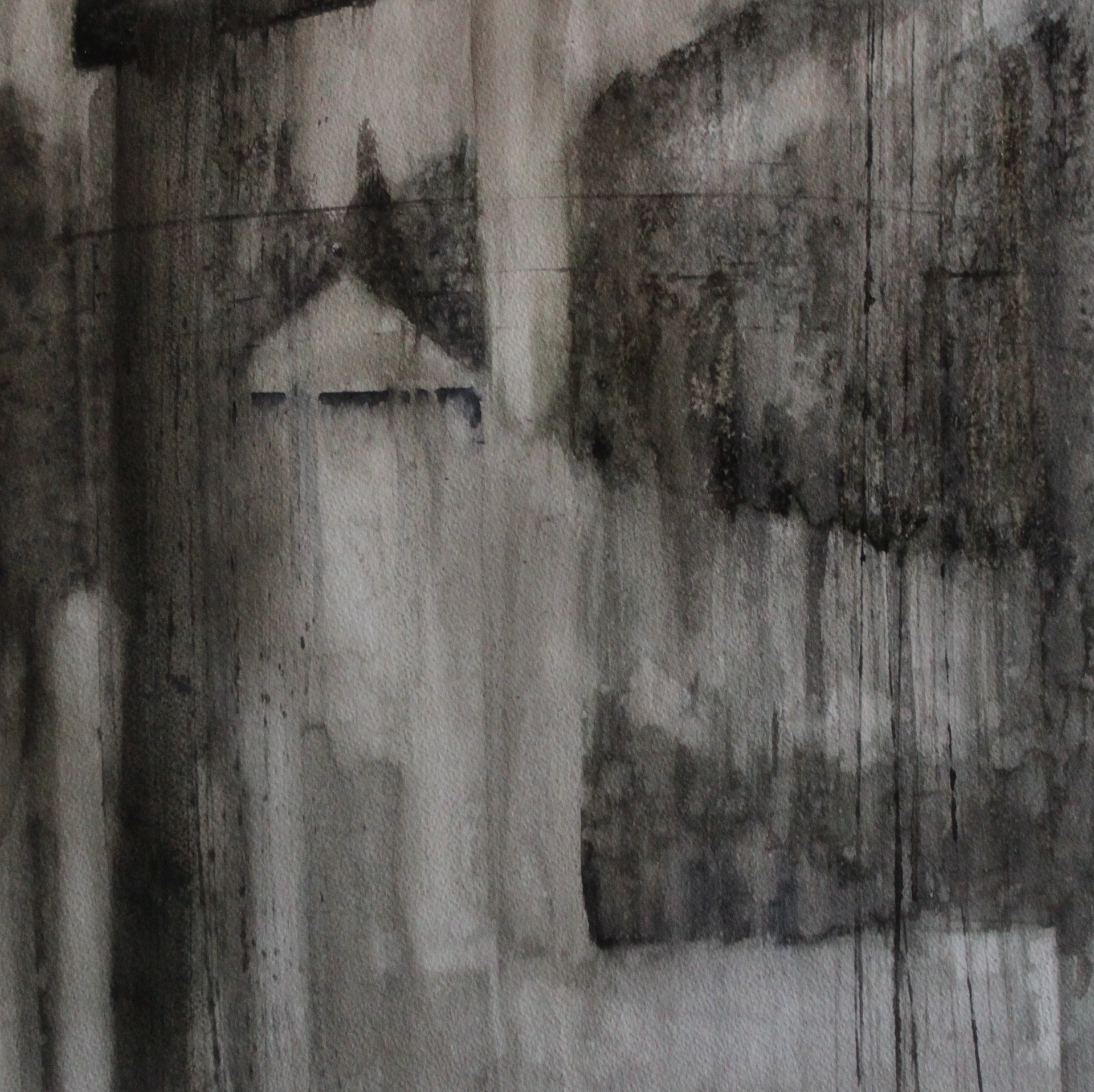
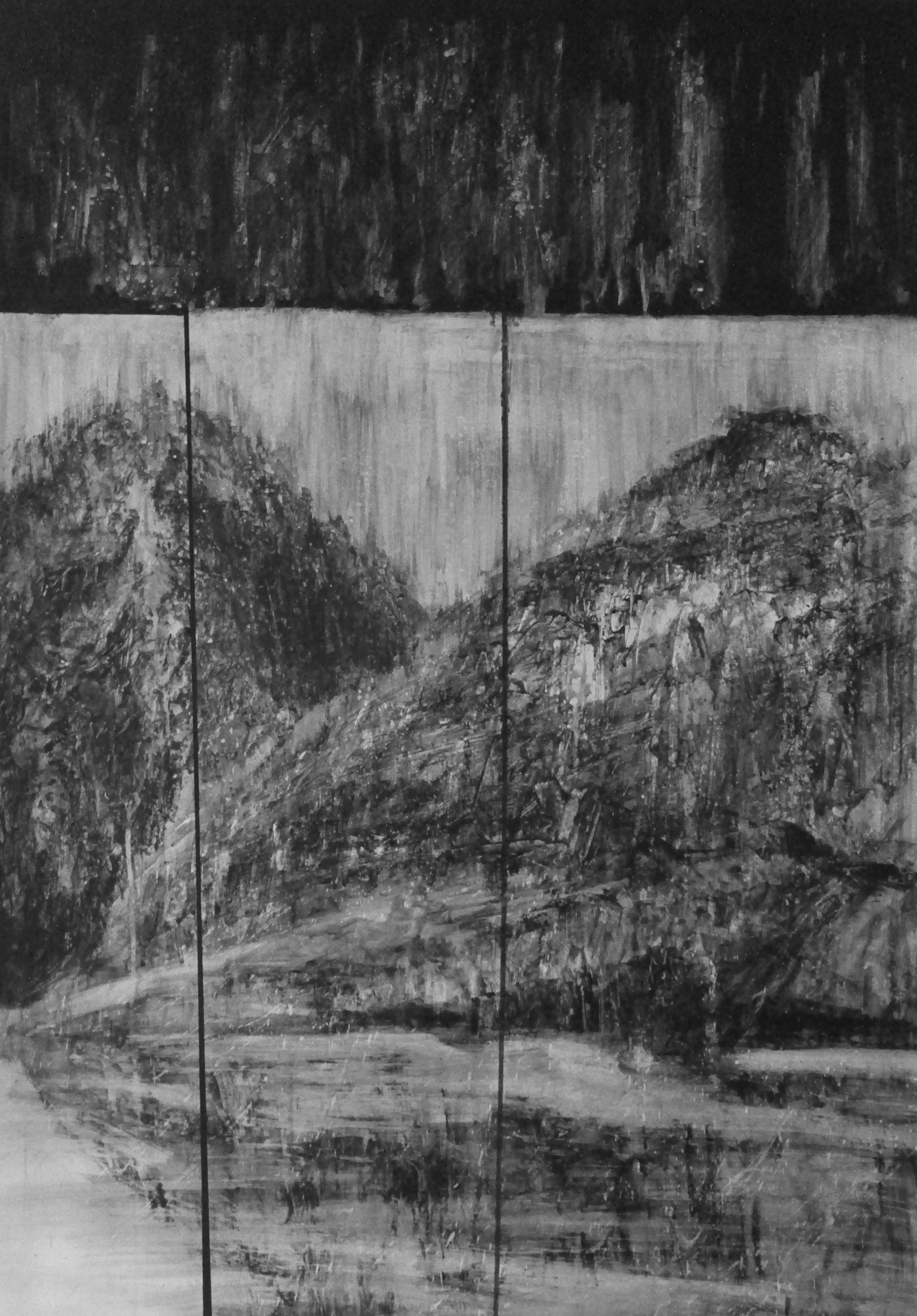

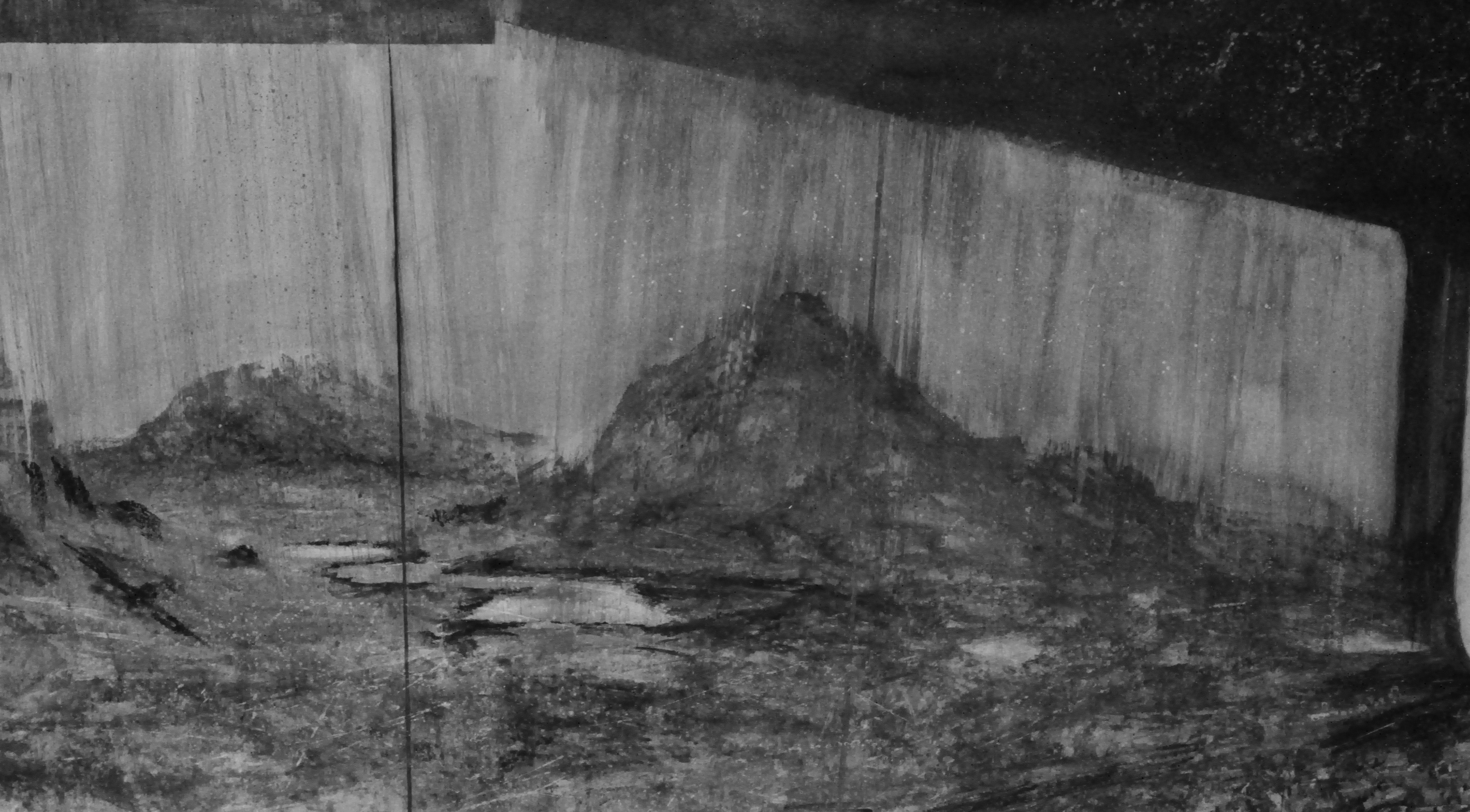
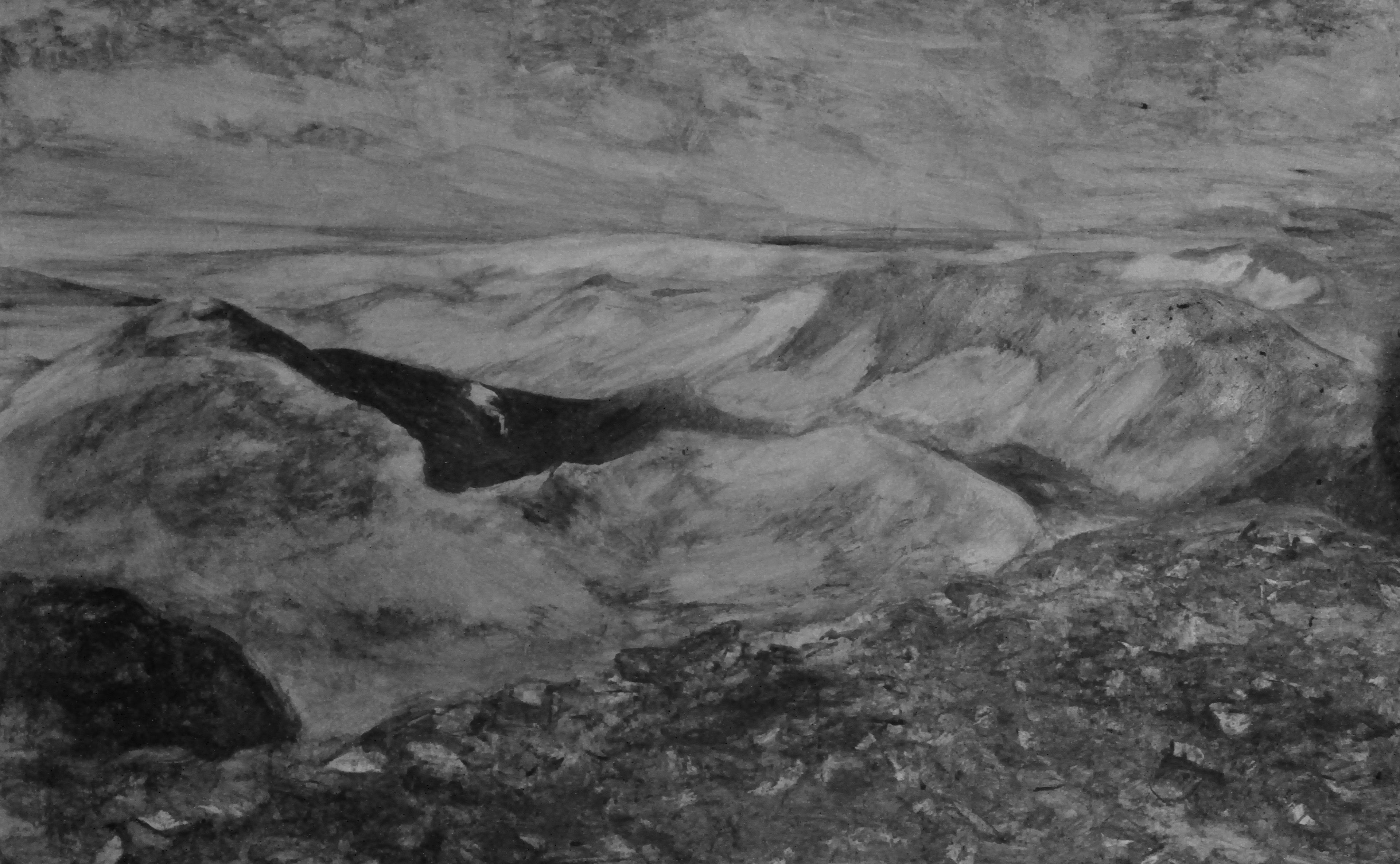

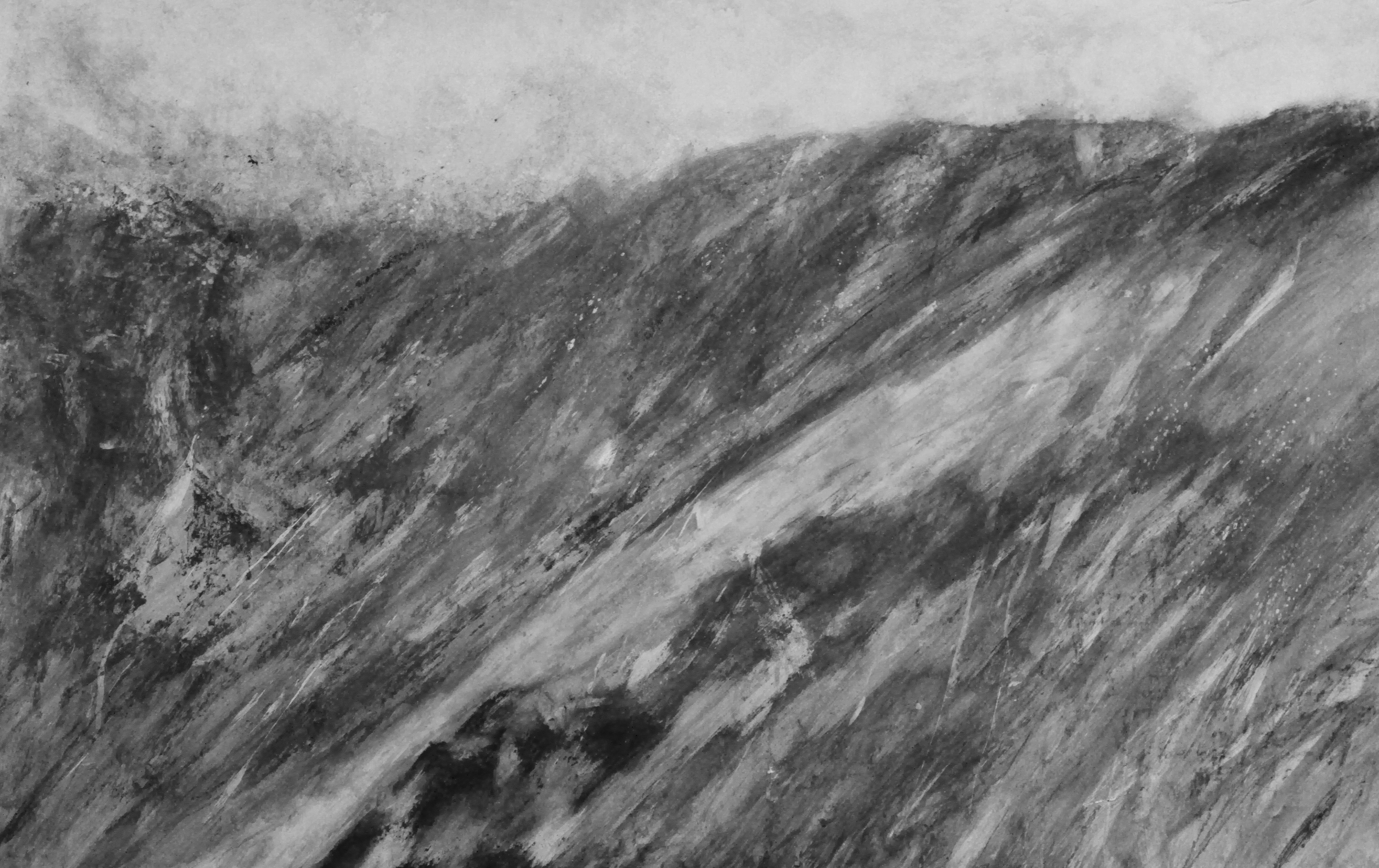


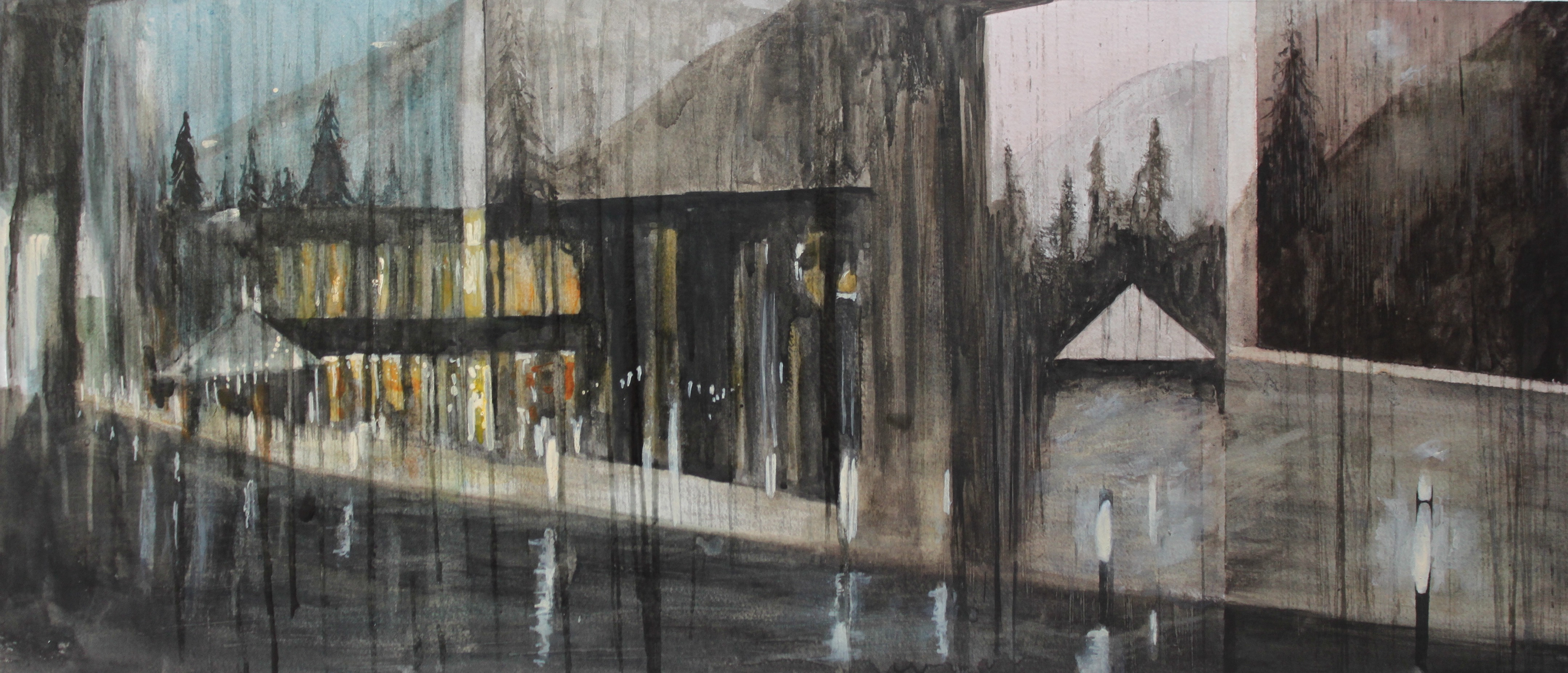
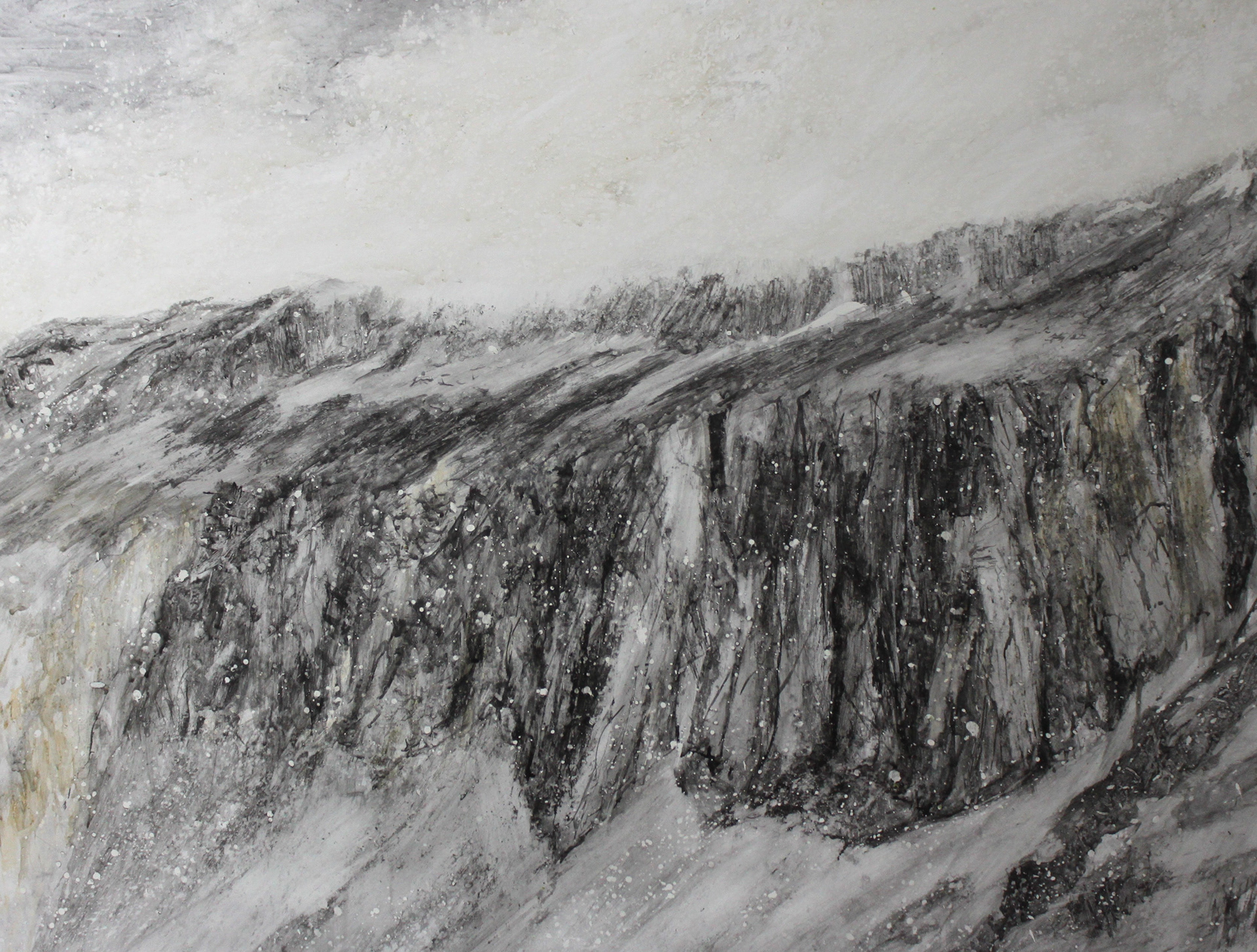
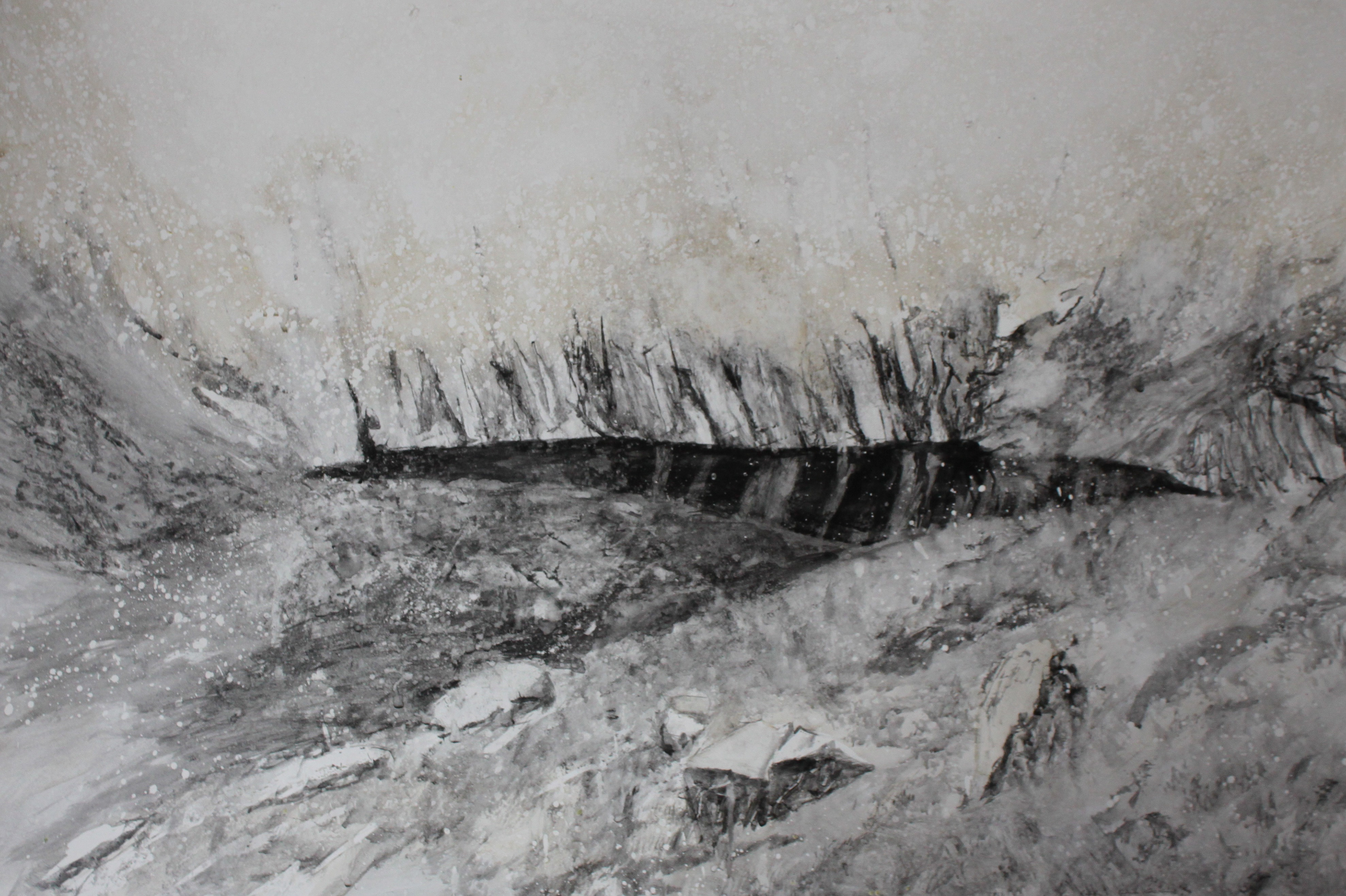
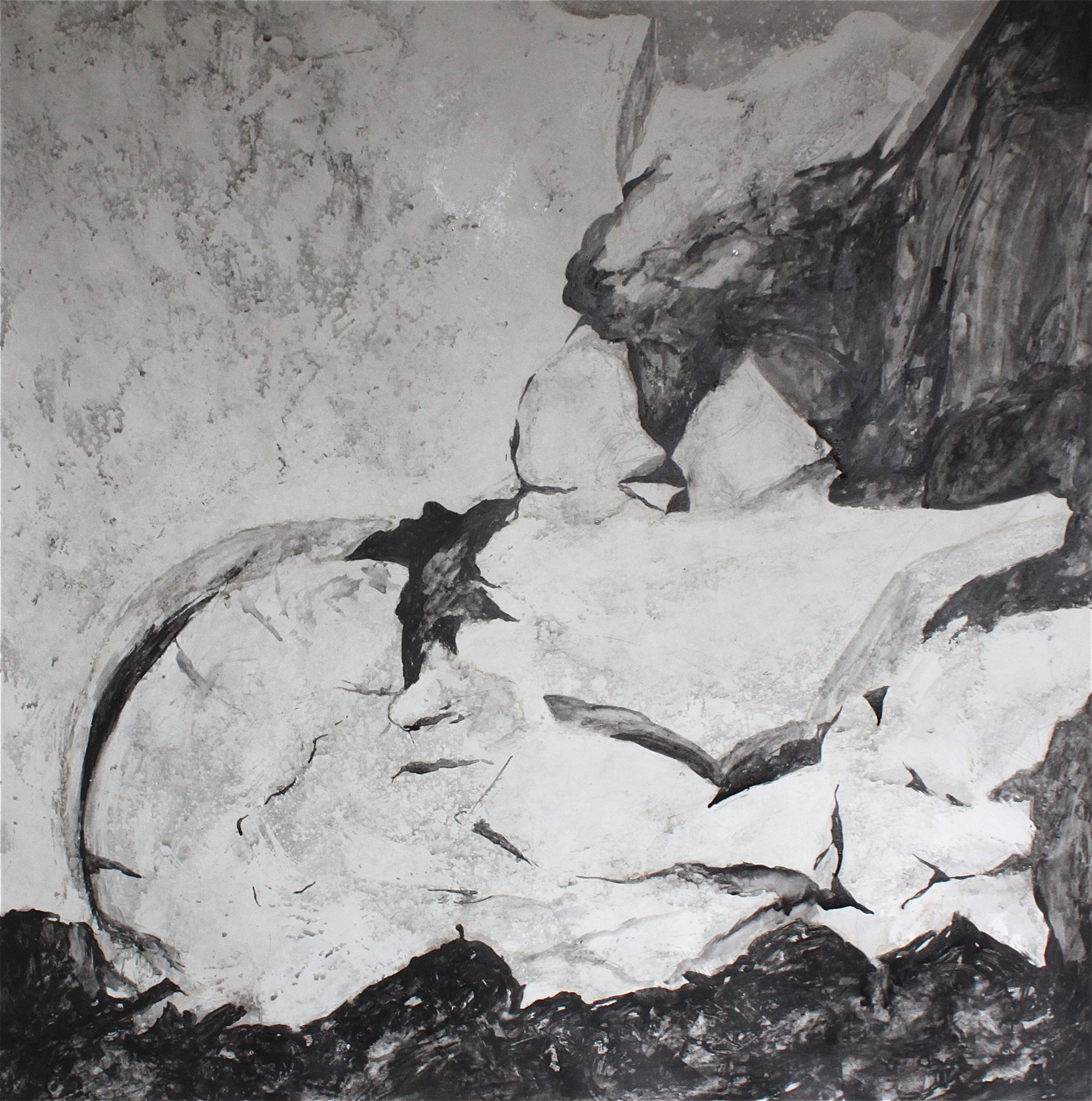
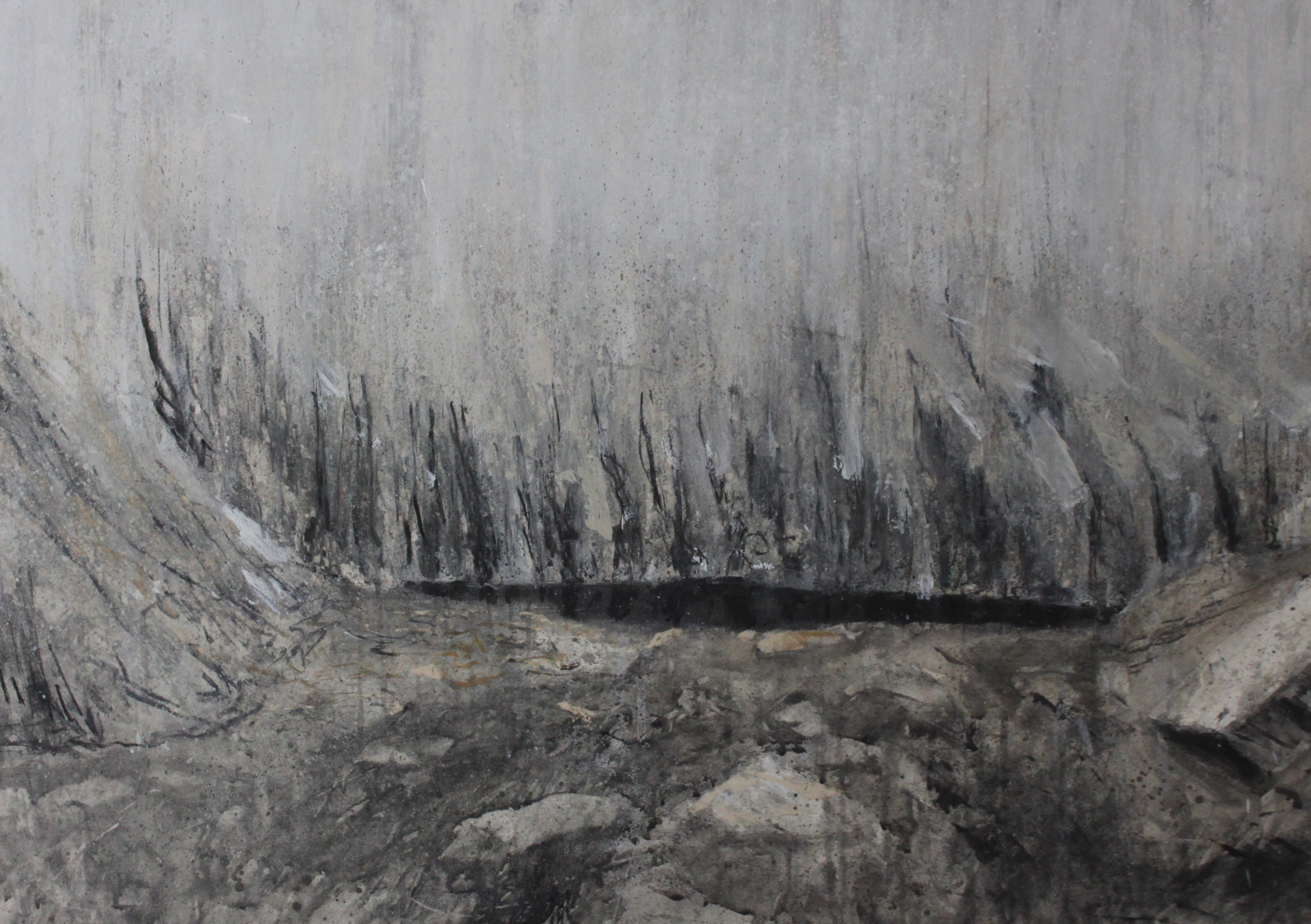


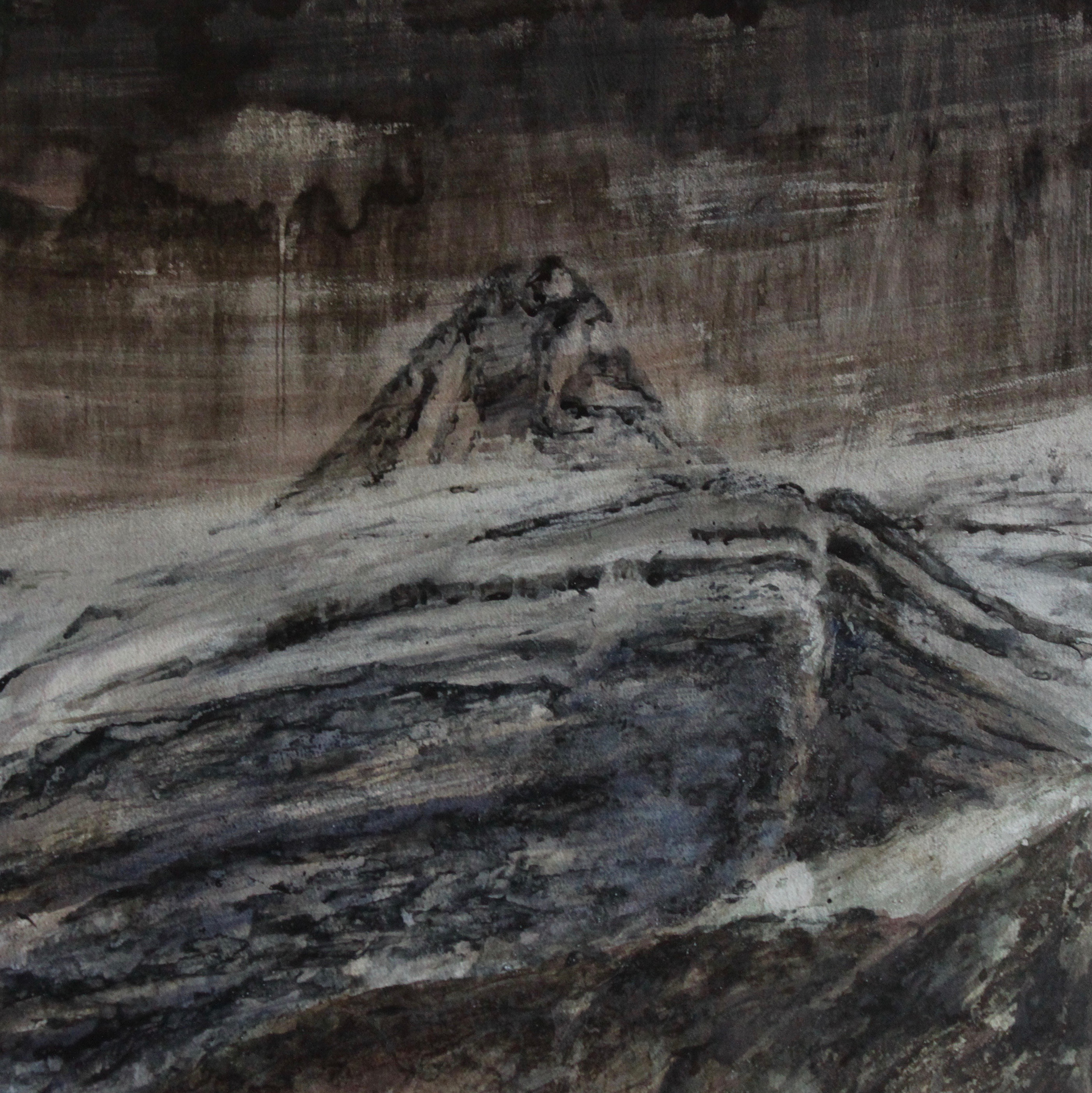


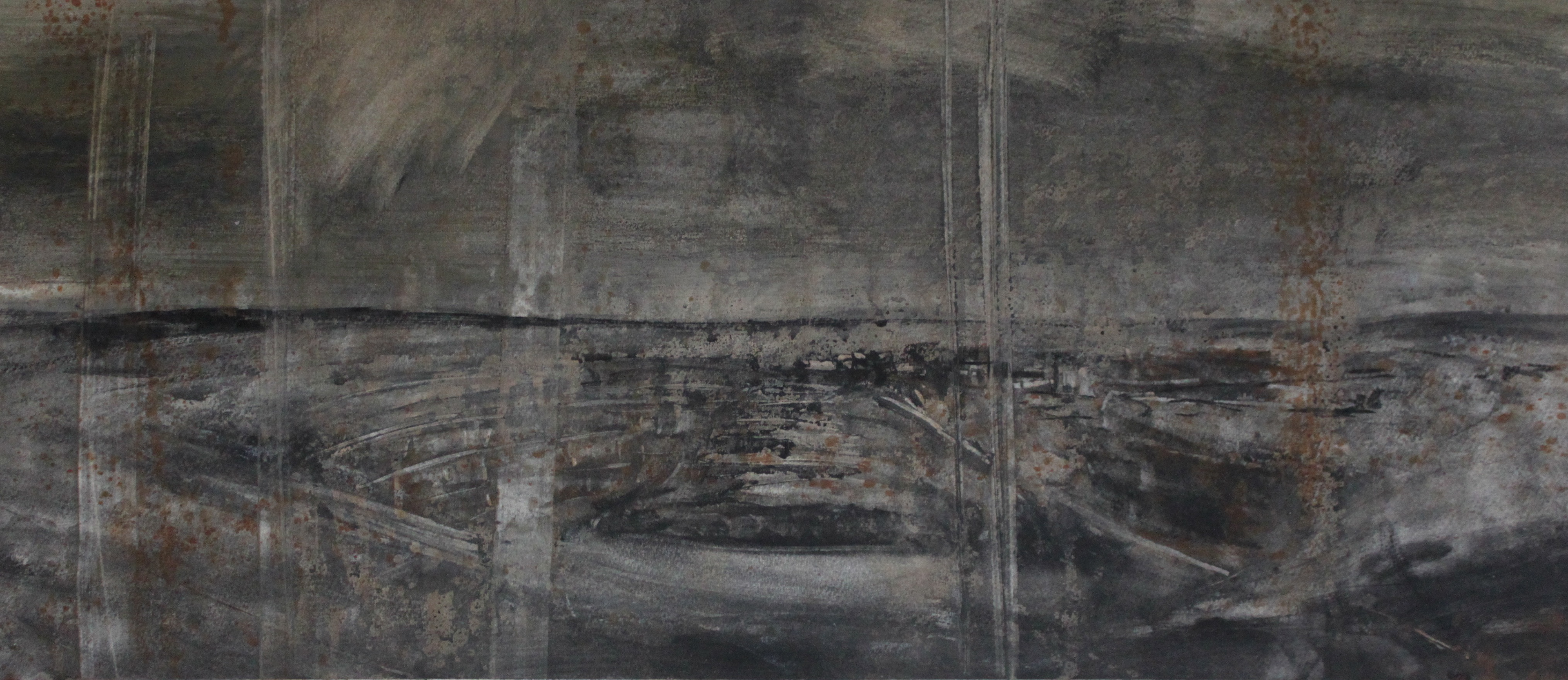
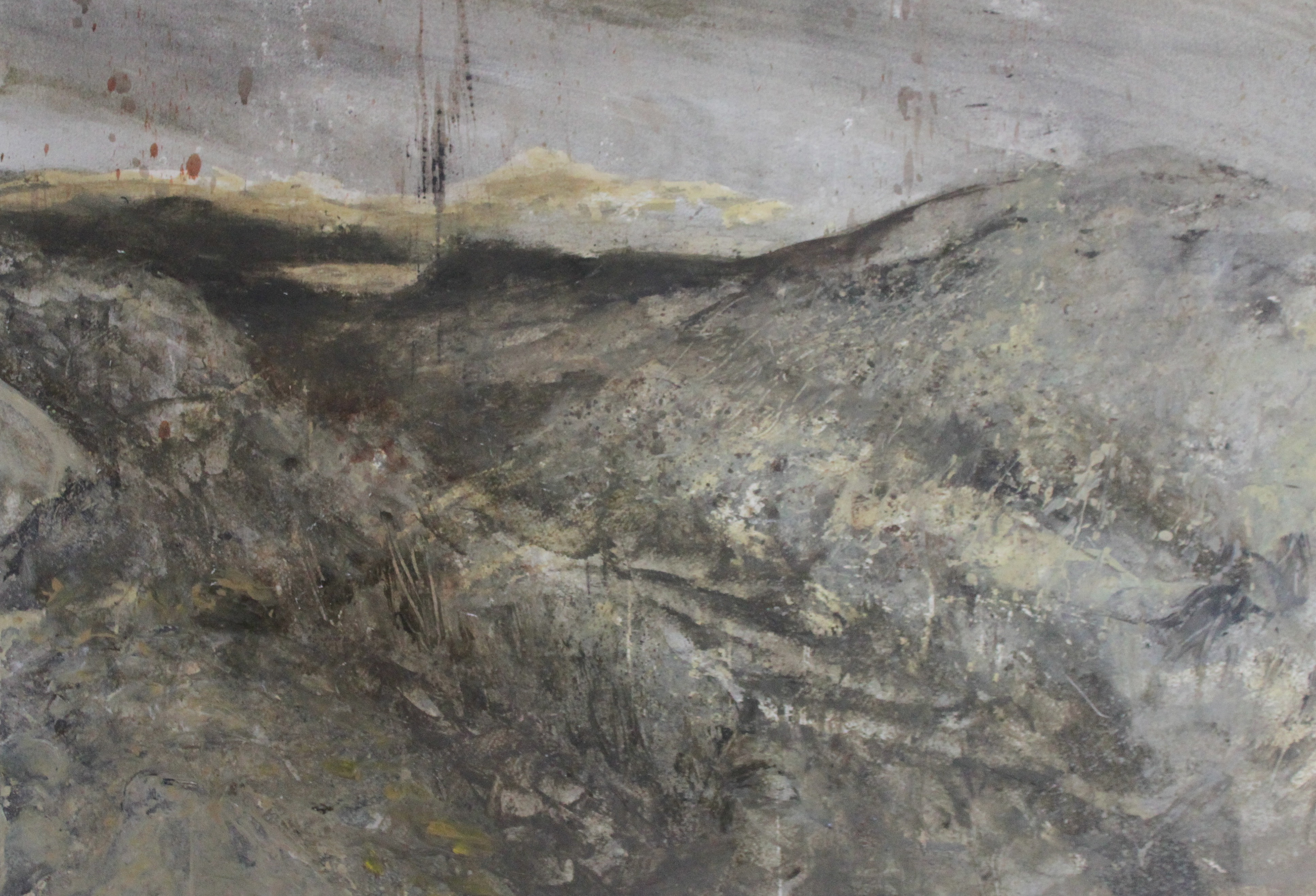
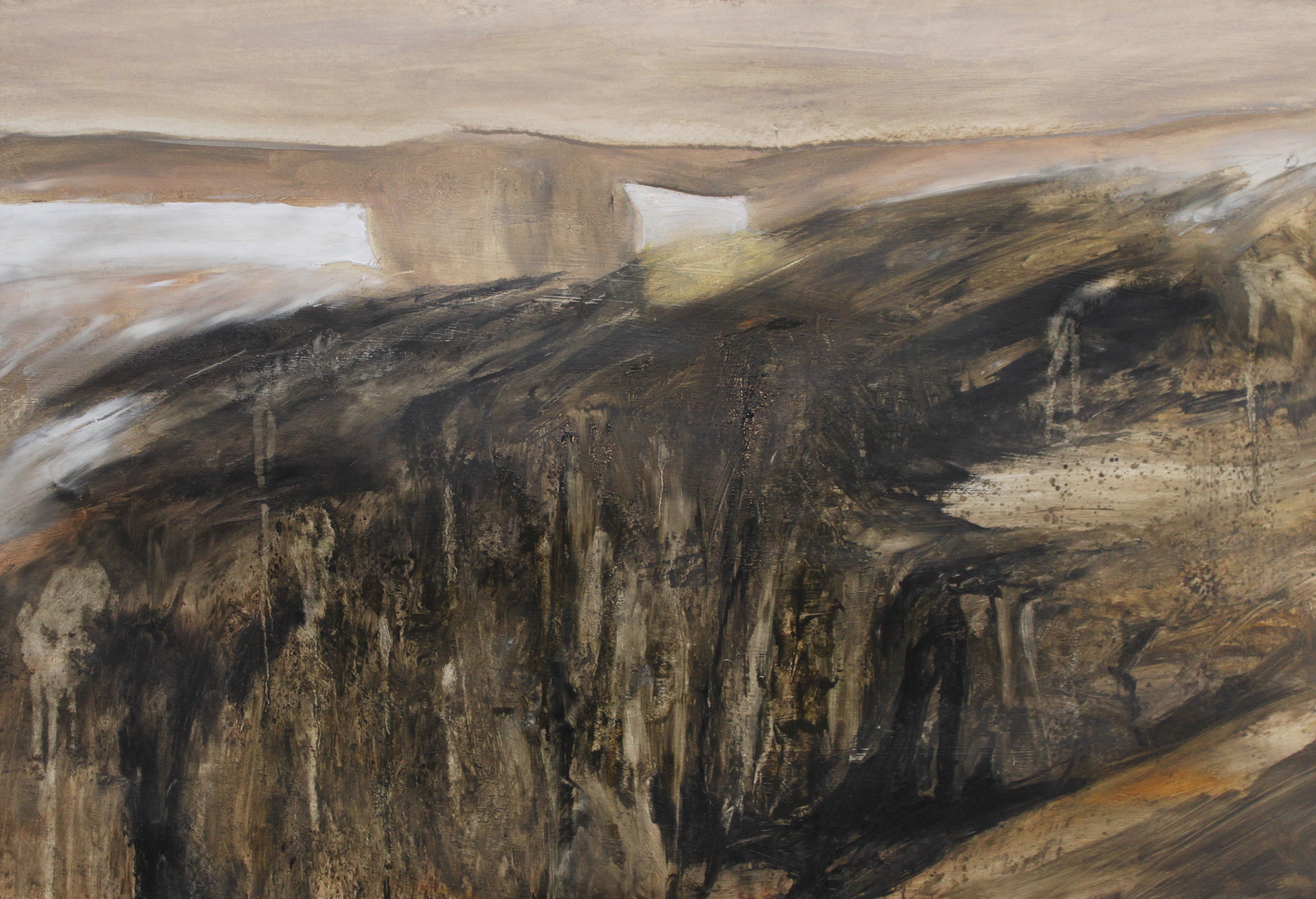


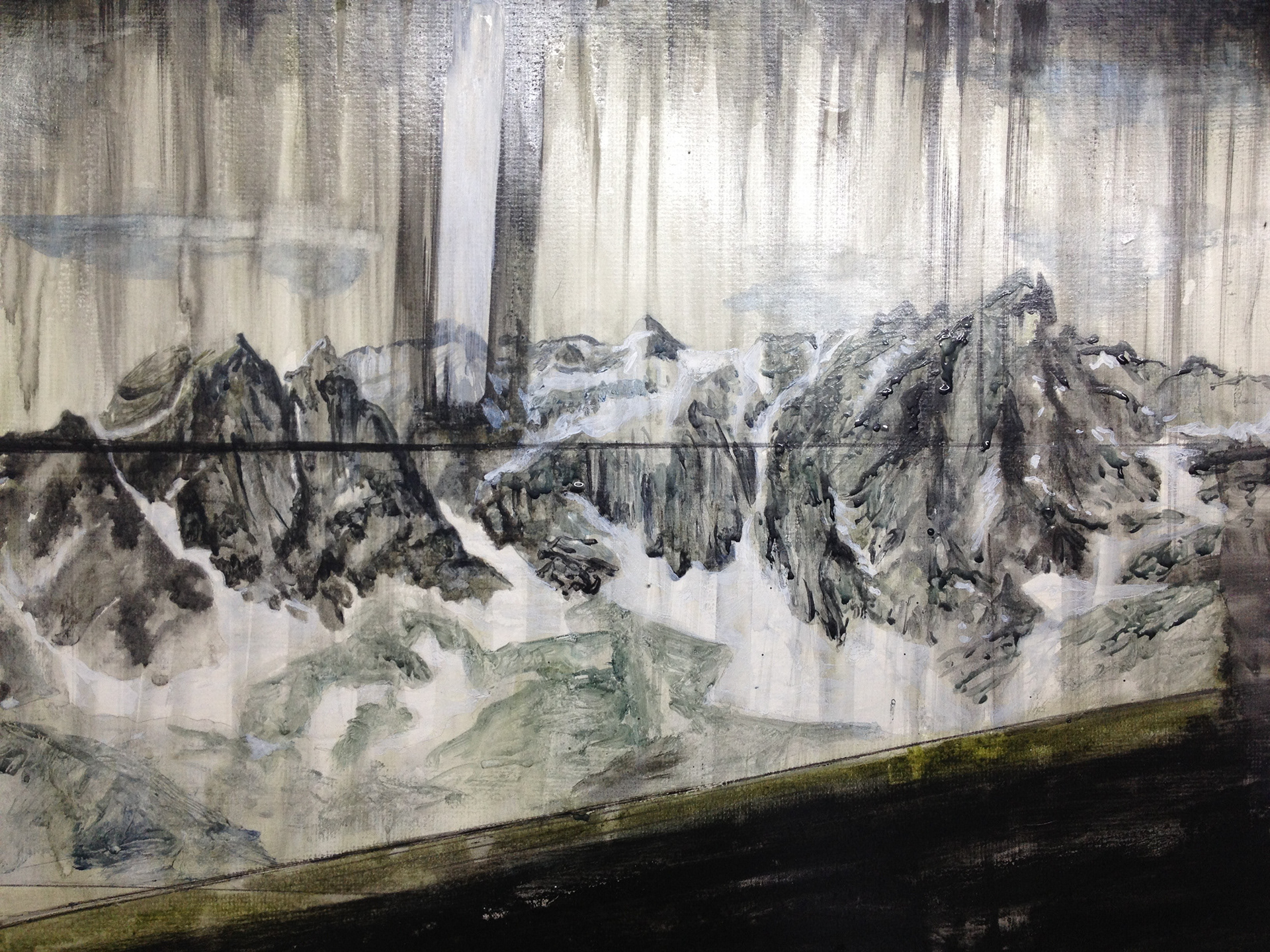
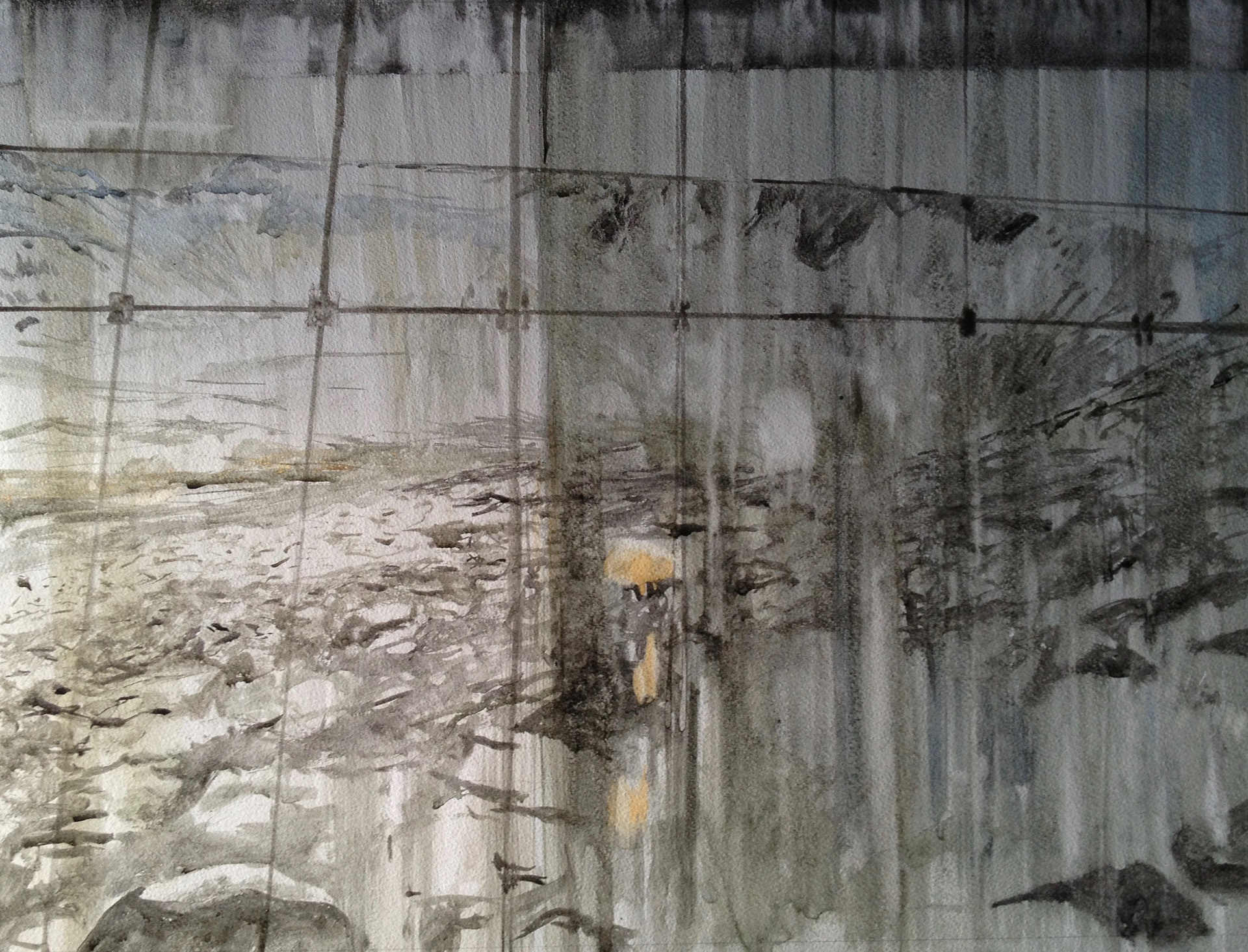
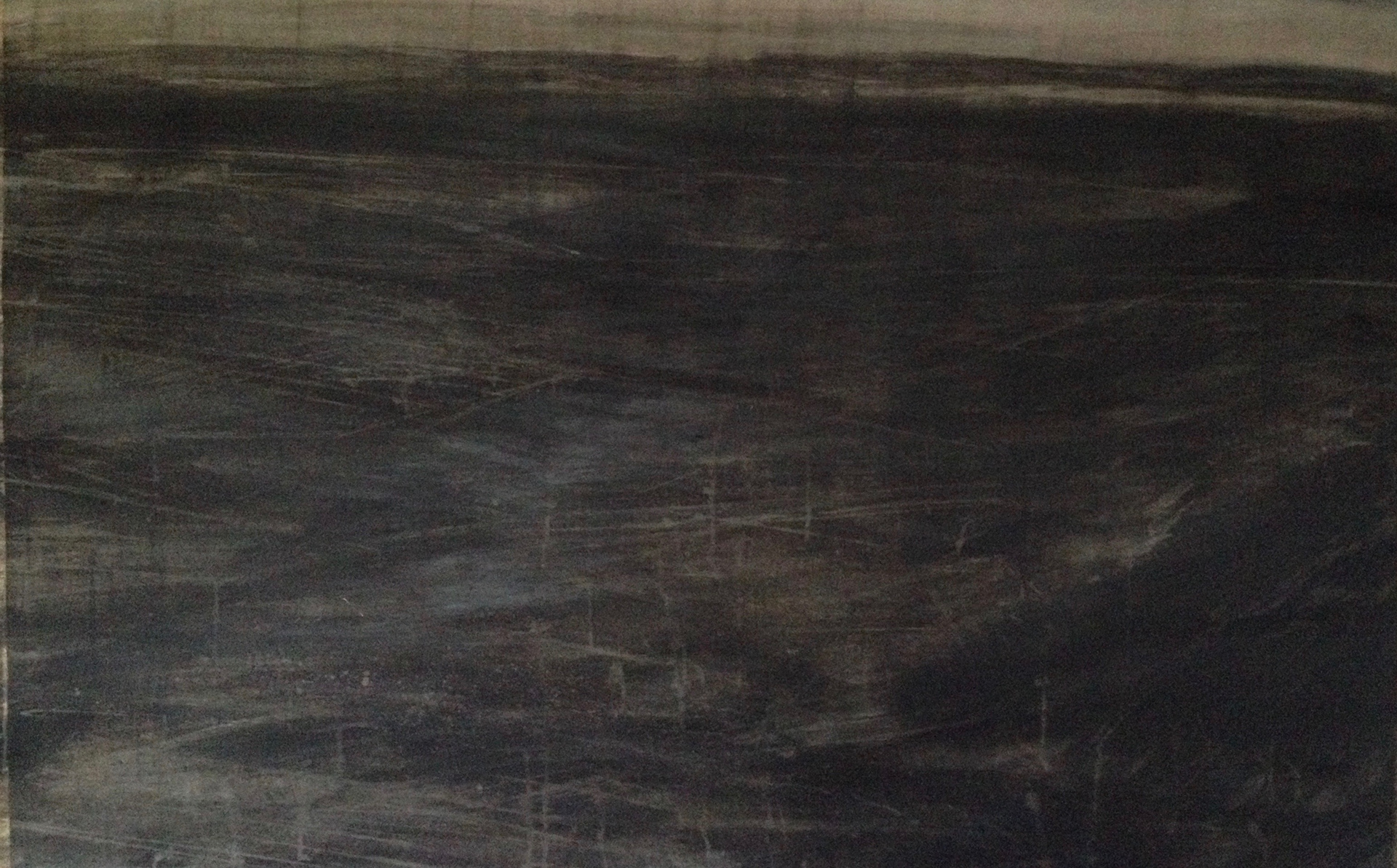

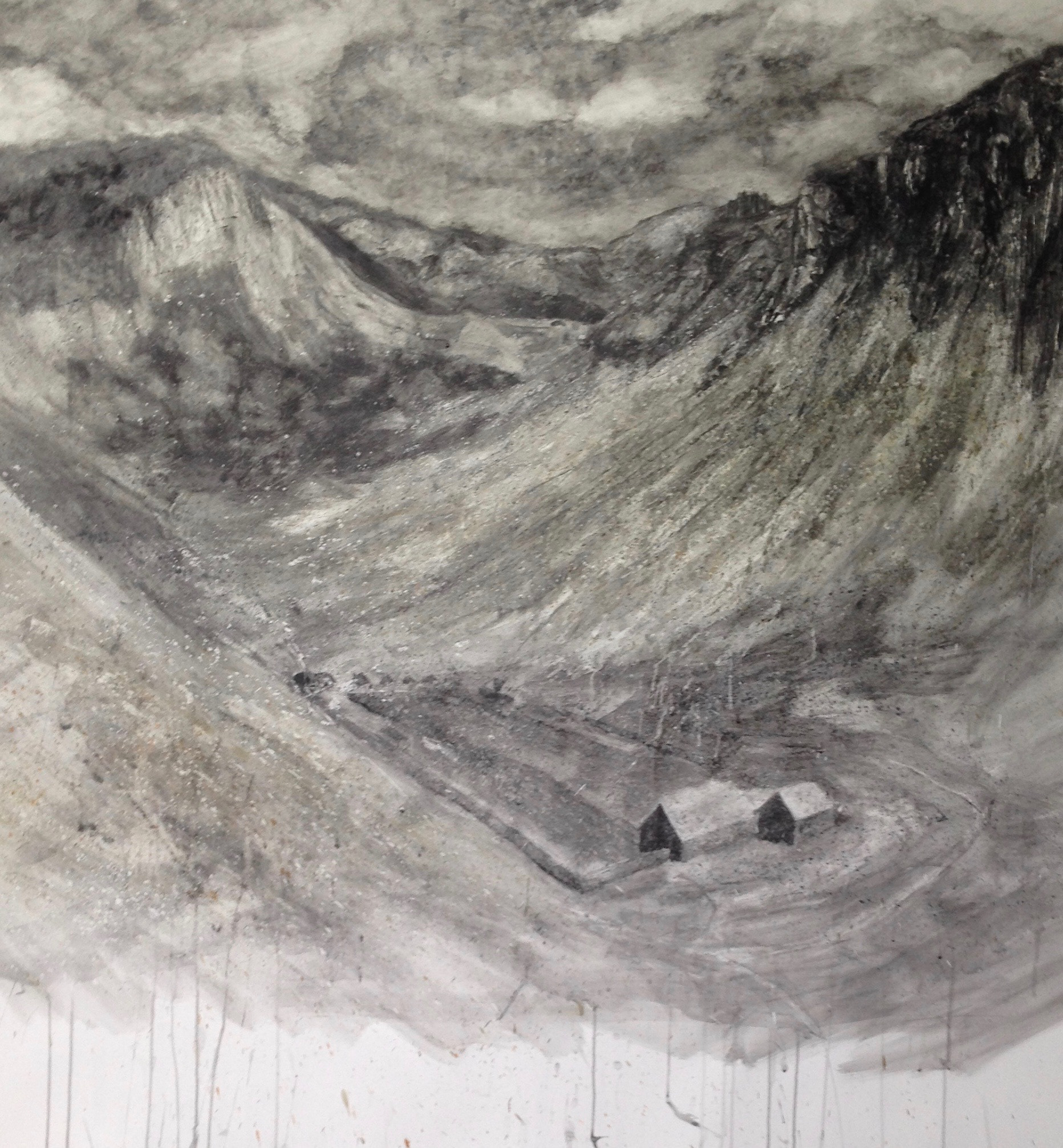
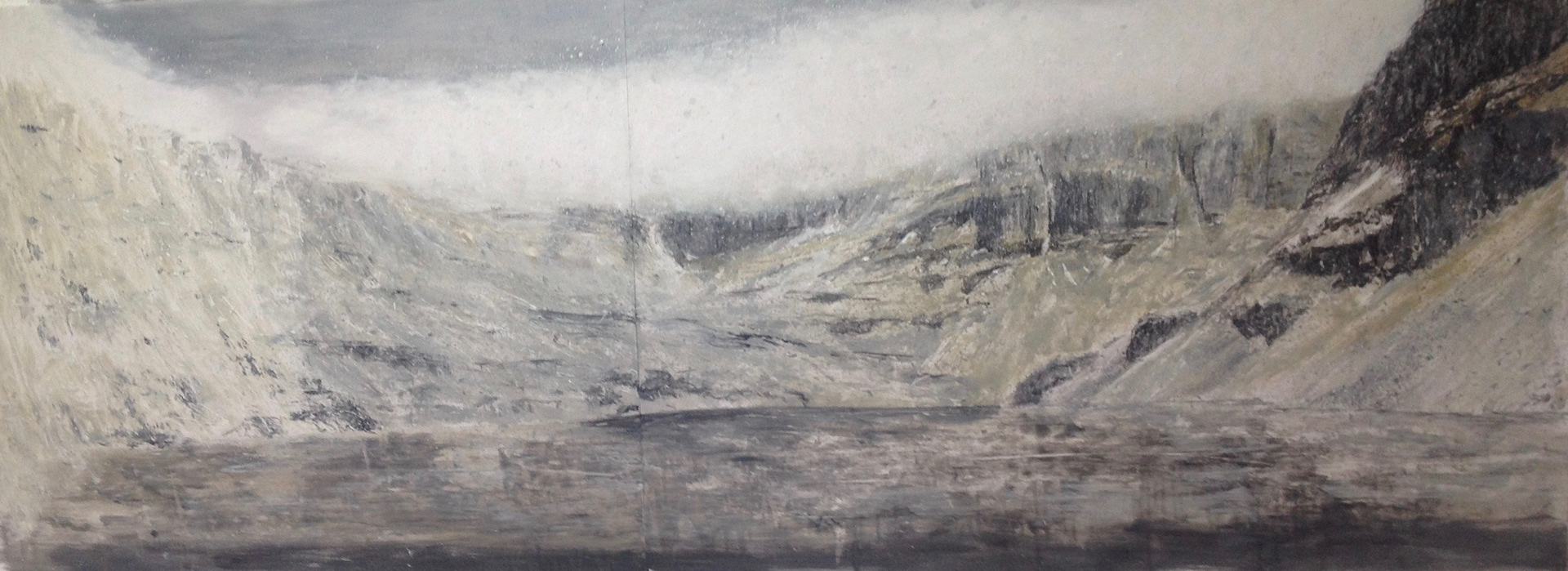

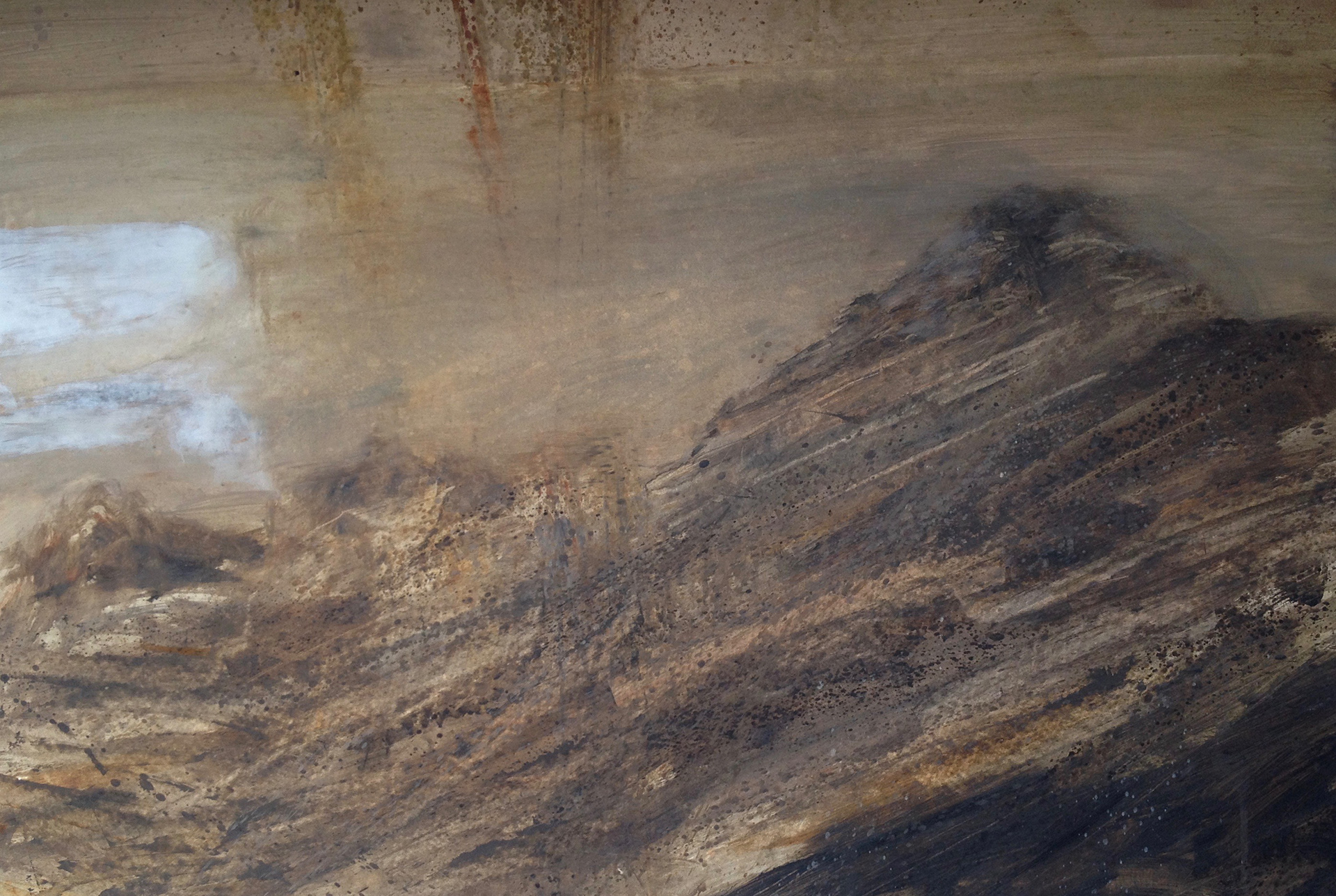
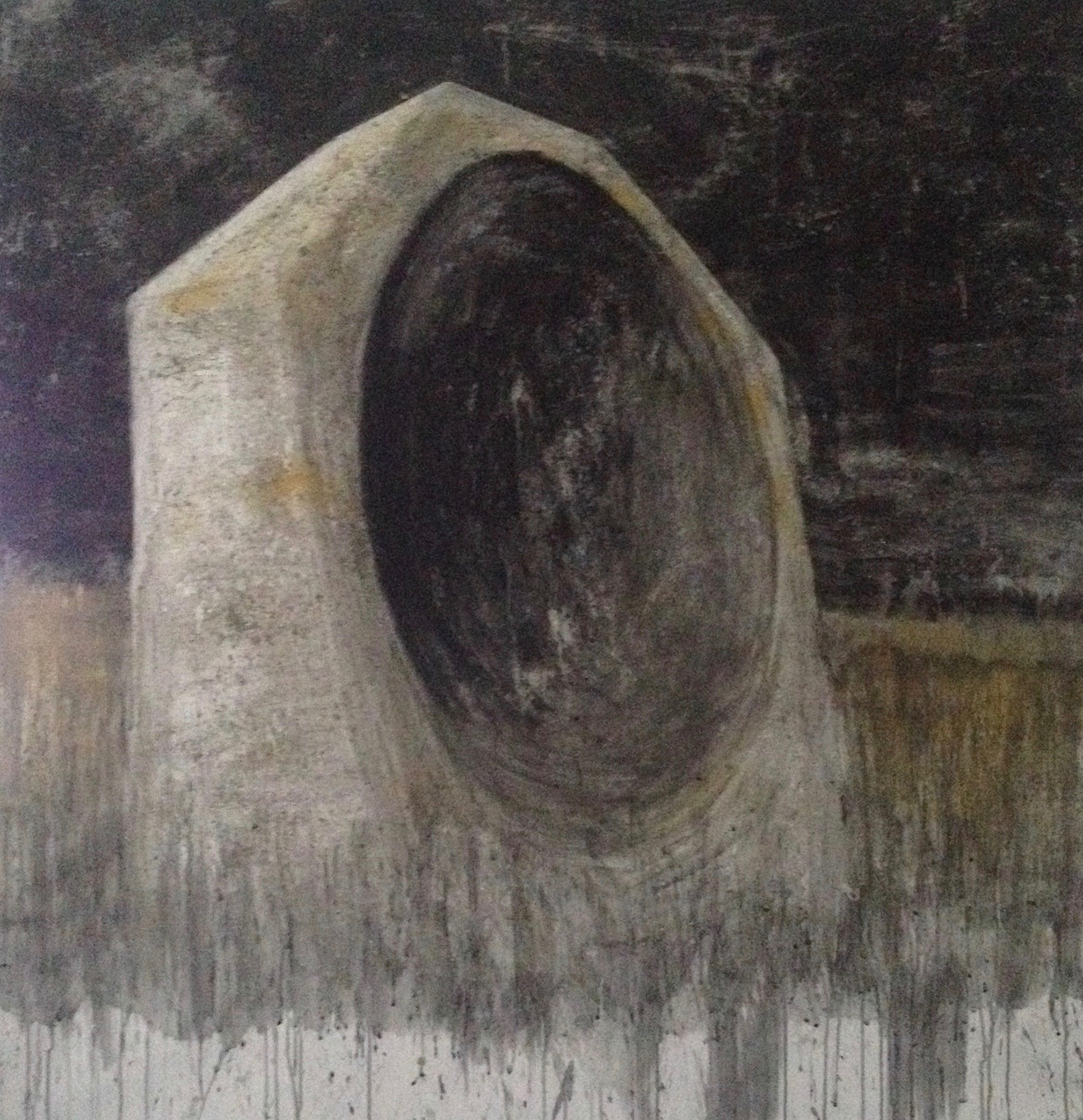

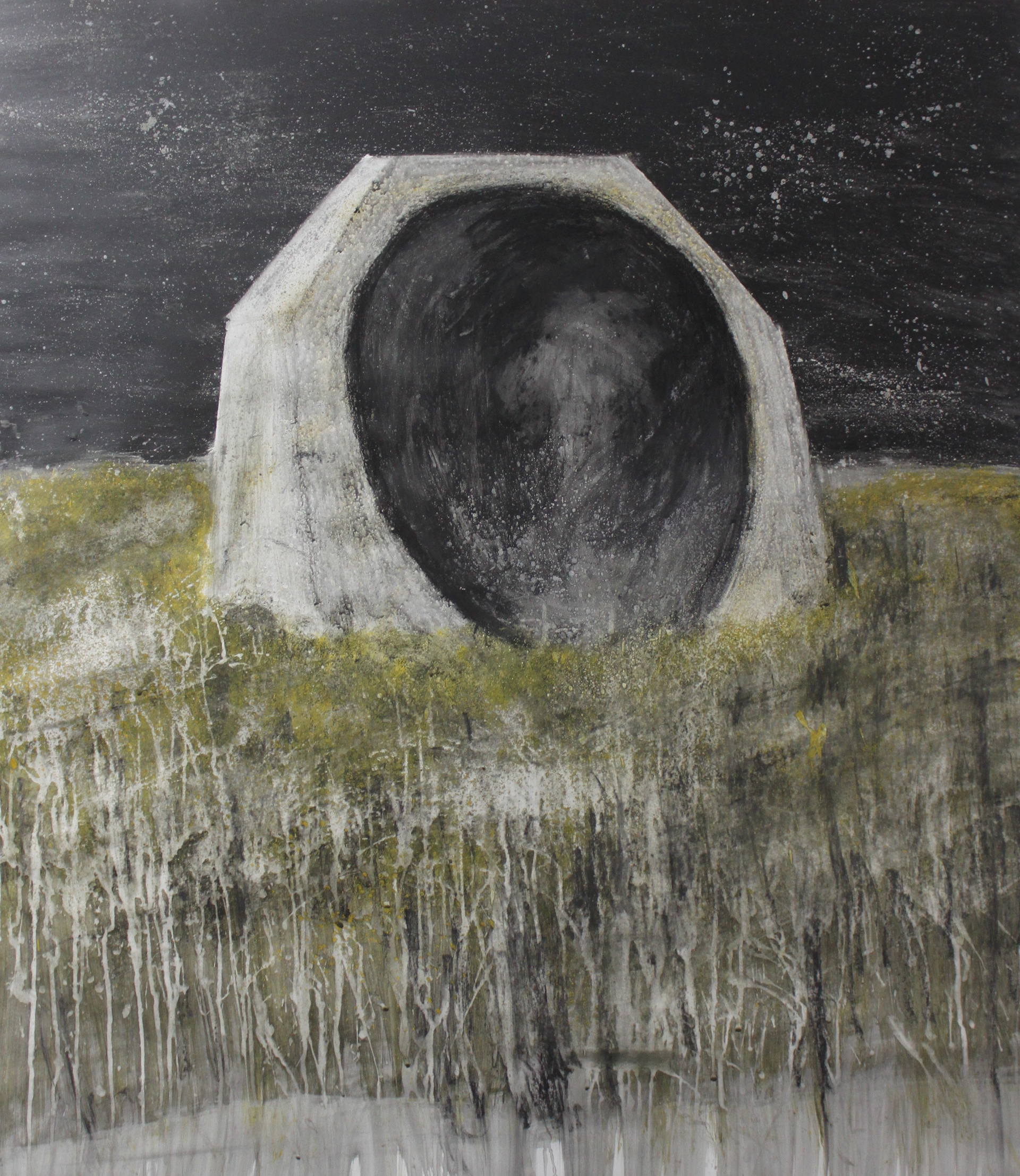
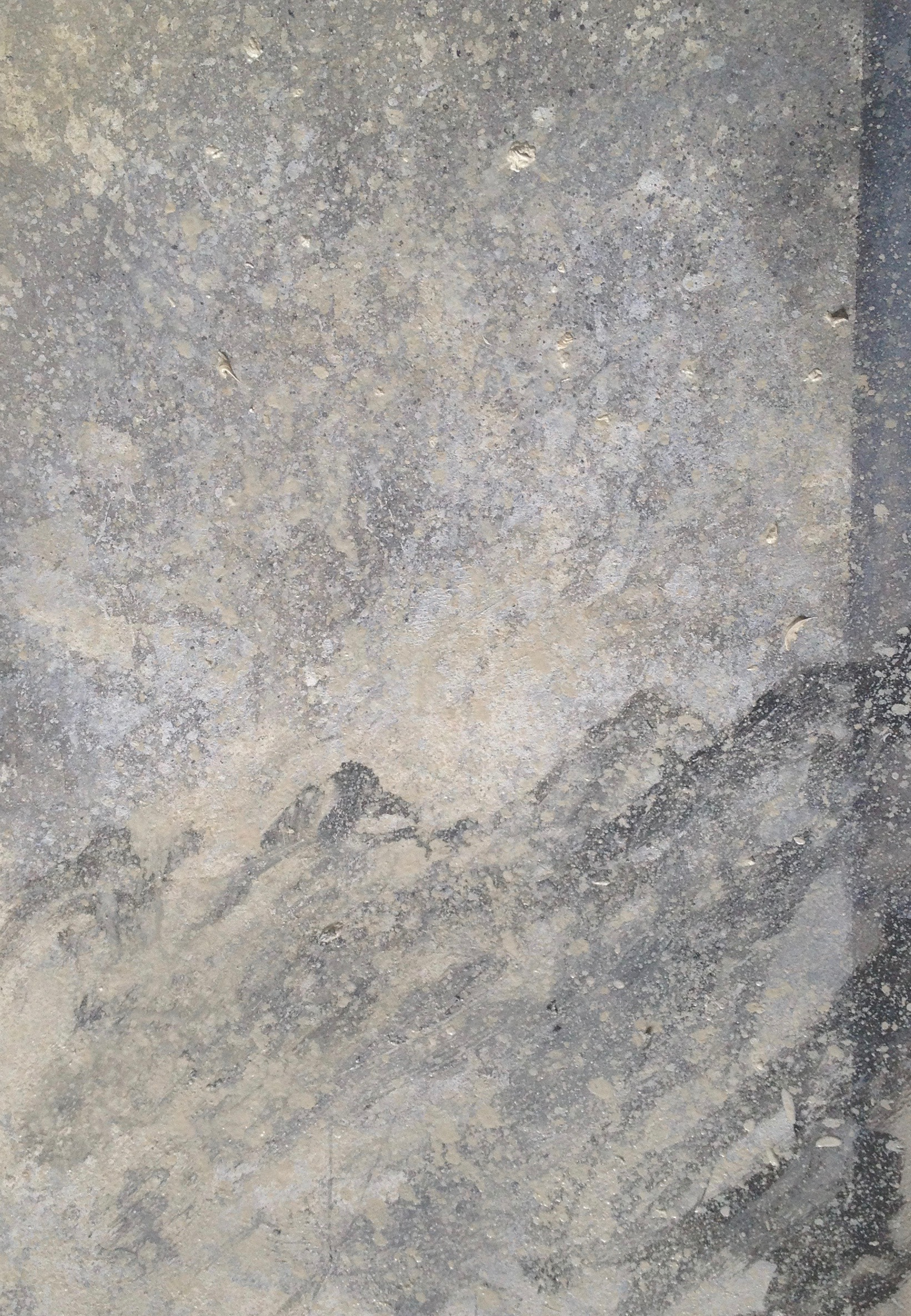
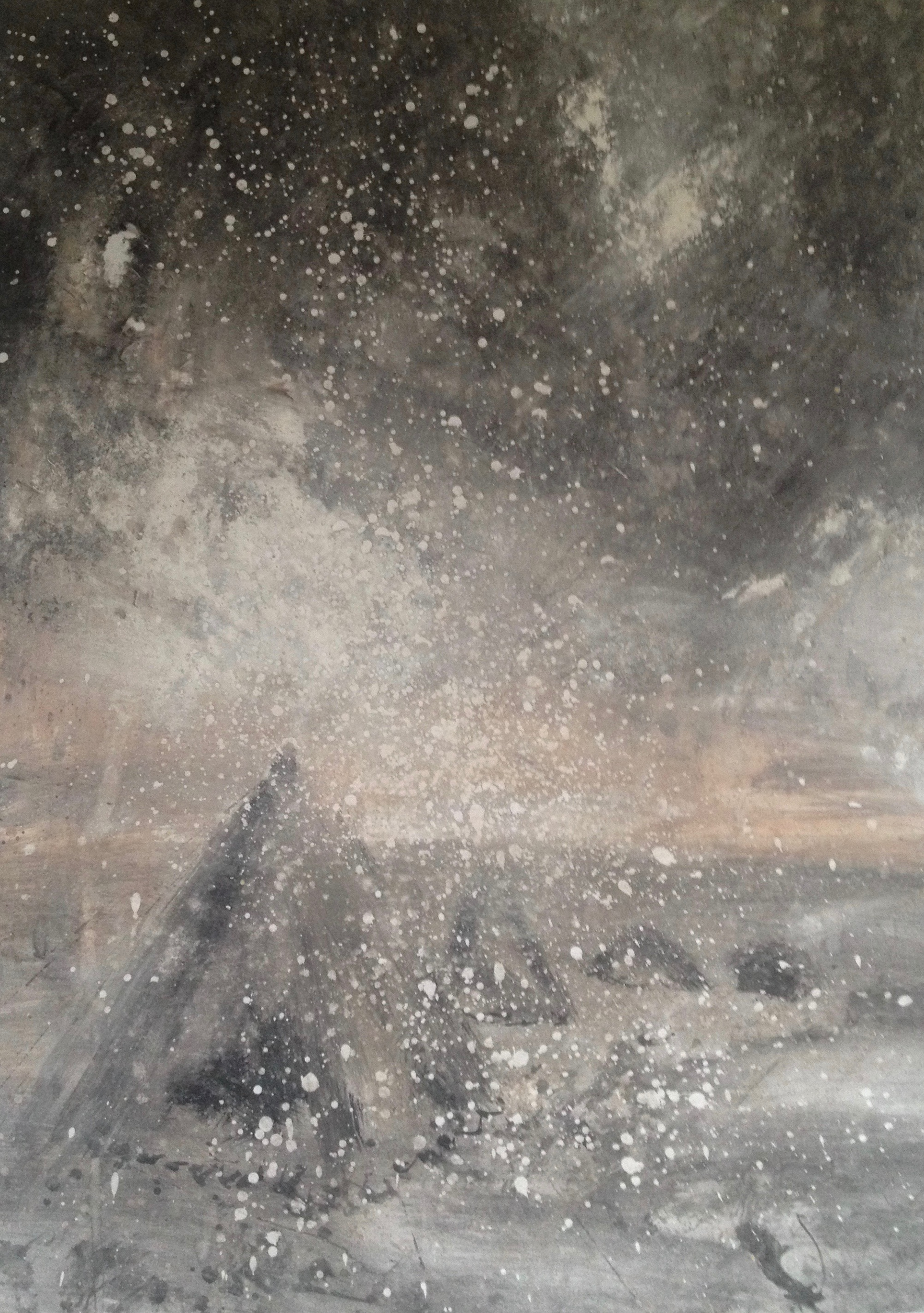
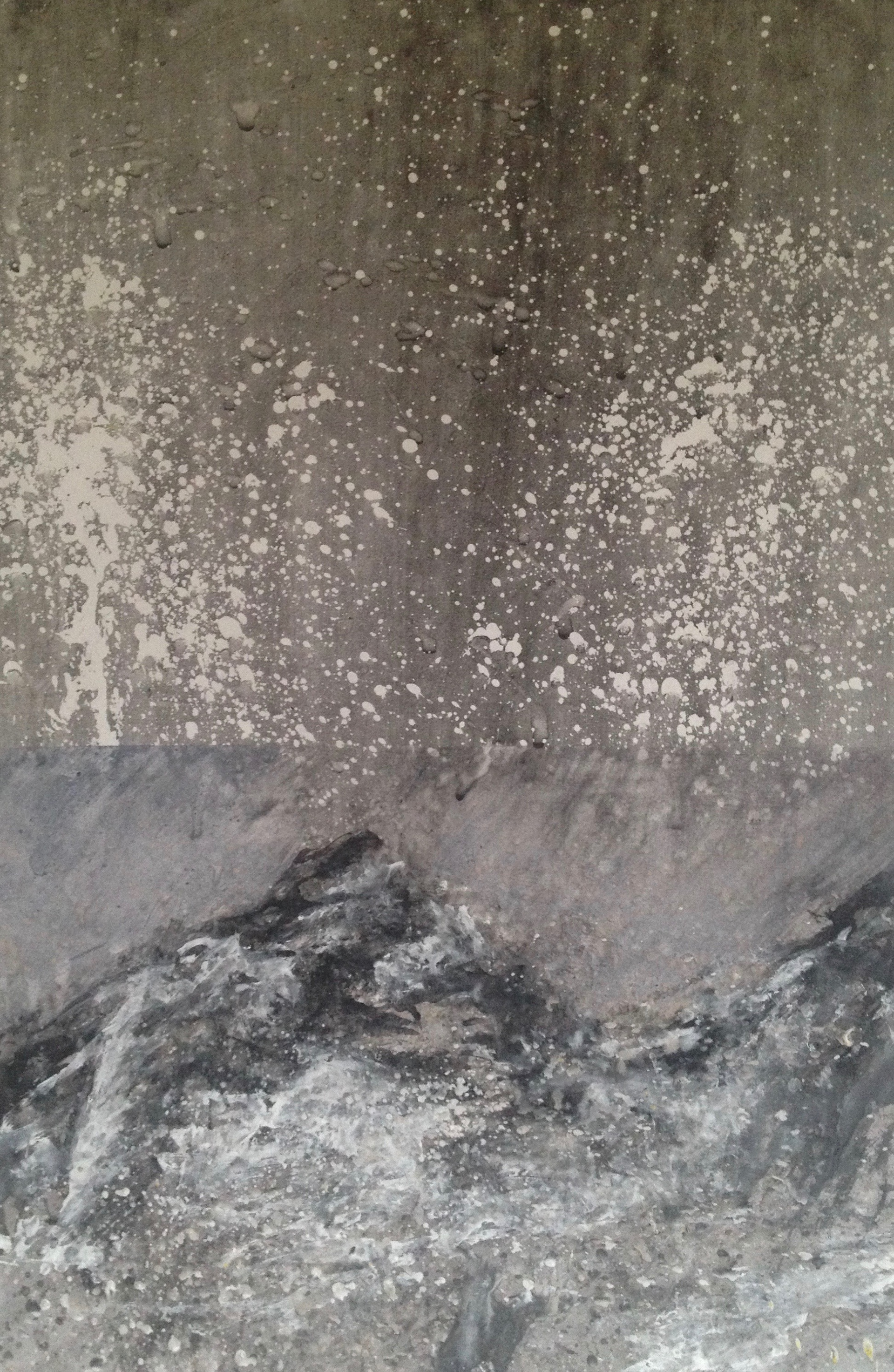
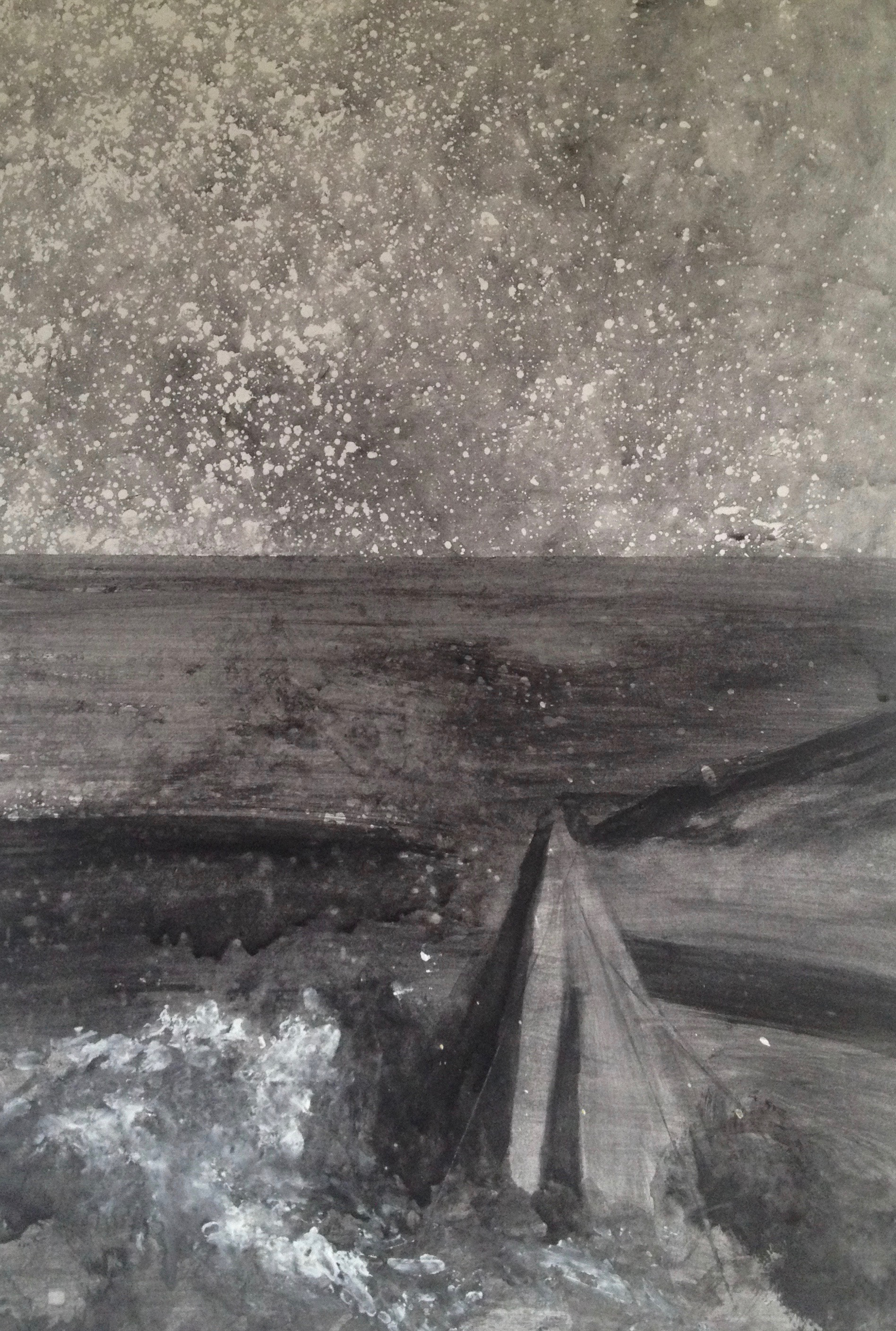
Oliver Reed’s engagement with nature is as physical as it is intellectual. As a hill walker, the Munros of the Torridon Hills are favourite climbs of his. There, surrounded by some of the oldest rocks on earth going back hundreds of millions of years, the artist cannot but be acutely aware of the passing of time and of his sense of place. The forces of nature that thrust these mountains up and then sculpted them down into the landforms we know today indeed bring to mind the Romantic aesthetic vision of the sublime that put man in its insignificant place.
This weathering of rocks and nature’s manipulation of raw materials captivate Reed, not only in their immense scale but also at microscopic levels, in the lichens that cling to the rocks for instance. The challenge for the artist is in the translation of these emotions and concepts onto a two-dimensional surface.
Reed’s representation of the land comes in a diversity of forms: painting, drawing, filming, and assemblage of objects. His paintings are primarily about drawing which is also the key area of his teaching practice and if his style appears to be always changing this is because it defines itself through process and experimentation. This artist is constantly looking for new ways of making marks and often in an unconventional manner.
He is currently painting with natural materials such as graphite and pastels that are more traditionally associated with drawing and often hammers them into the thick paper with granite stones picked up during his walking trips. It is as if, through these gestures, he aspires to depict the hardness and rawness of his very physical encounters with the hills, his direct contact with the surface mirroring his closeness to the rocks.
His handling of materials is also echoed in his manipulation of the digital images he brings back from his hiking trips in his search for the right shape or mass that will inform his paintings.
Reed likes to combine low-tech with high-tech processes. In his painting ‘Location’ in the Art in Healthcare (AiH) collection the organic splashes stand out against the minute and barely visible coordinates of longitude and latitude contained within the graph paper. Here he alludes to the paradox that the sophisticated technology that produces this data can never tell us exactly where we are as it is forever progressing towards infinity and therefore the information it gives us is as random and arbitrary as the splatters of paint.
Oliver Reed describes his practice as always on the cusp, hovering between two states. And here it is, balanced between the formidably vast and the infinitely small, a fitting metaphor for the sublime of our age.
Martine Pugh 2013
